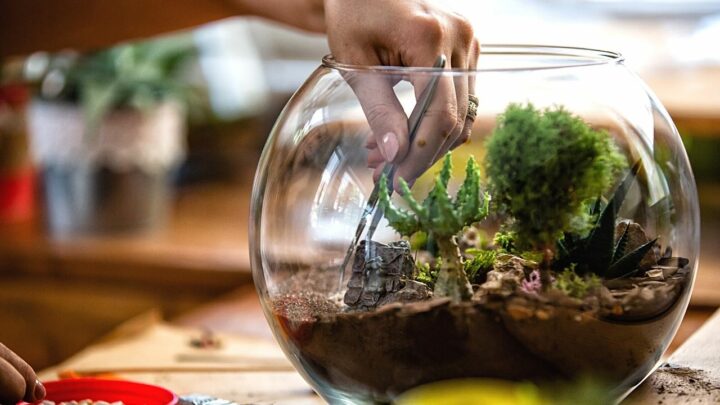Terrariums are miniature plant communities that thrive in glass containers. It’s easy to understand why they’ve seized the horticultural industry by storm.
To begin, they’re low-maintenance. Second, they are small enough to fit on a countertop.
Finally, they are a beautiful complement to any environment.
Terrariums are self-contained, whether made with cactus, succulents, or tropical species. This implies they’re rather simple to maintain for as long as you feed them with enough sunlight and water.
Furthermore, these small gardens have the potential to last for many years.
We have listed the plant for the terrarium, and some best of them are given below.
30 Best Plants for Terrarium
- Moss plant
- Air plant
- African violet
- Maidenhair fern
- Nerve plant
- Golden Pothos
- Polka Dot Plant
- Spider plant
- Aluminum plant
- Baby’s tears
- Creeping fig
- Black Mando grass
- Rattlesnake plantain
- Strawberry begonia
- Friendship plant
- Flame violet
- Dragon tree
- Button fern
- Rosary vine
- Watermelon peperomia
- Zebra plant
- Heartleaf philodendron
- Emerald ripple peperomia
- Pincushion plant
- Earthstar
- Pearlwort
- Artillery plant
- Bird’s nest fern
- Prayer plant
- Purple passion plant
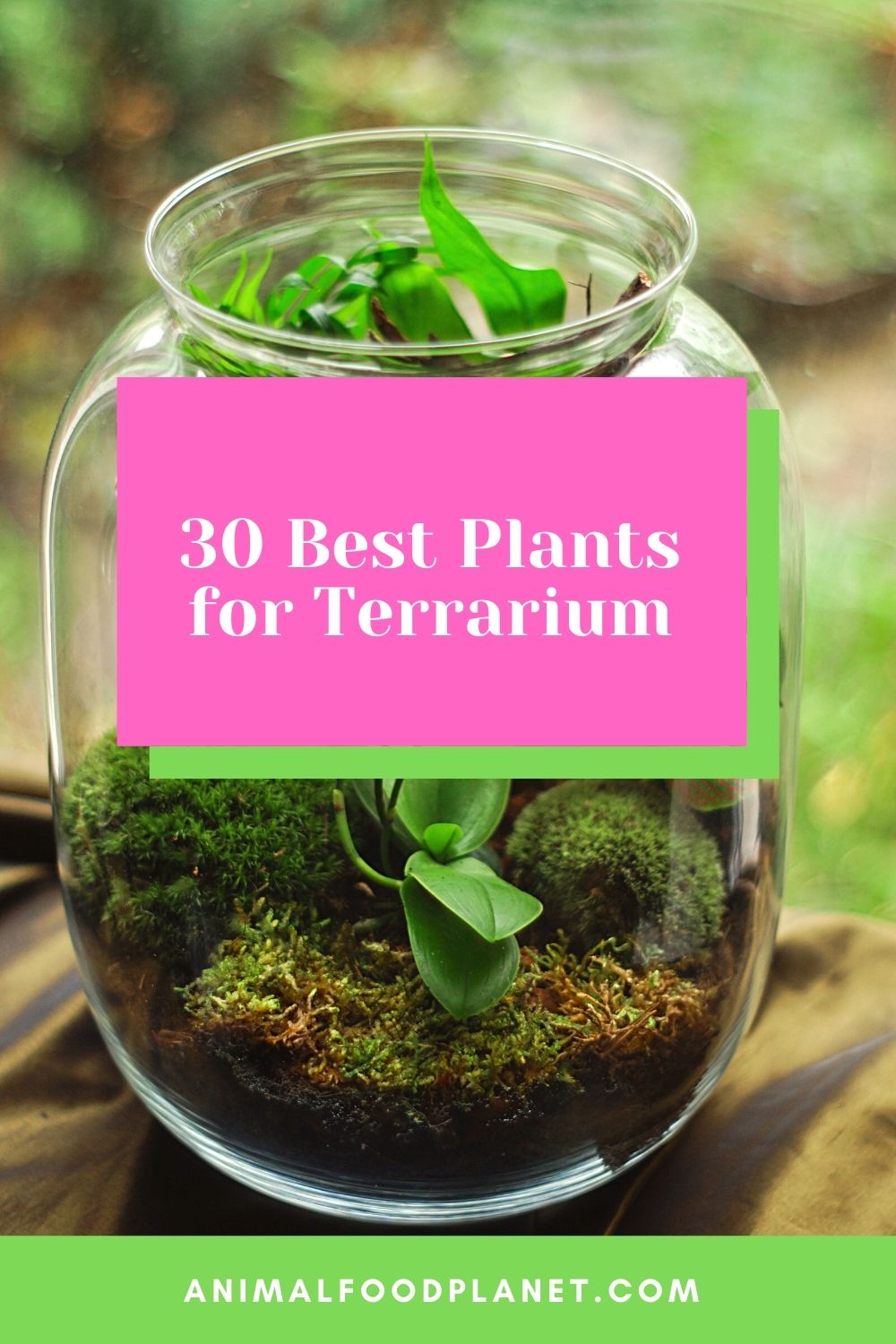
30 Best Plants for Terrarium
30 Best Plants for Terrarium
Moss Plant
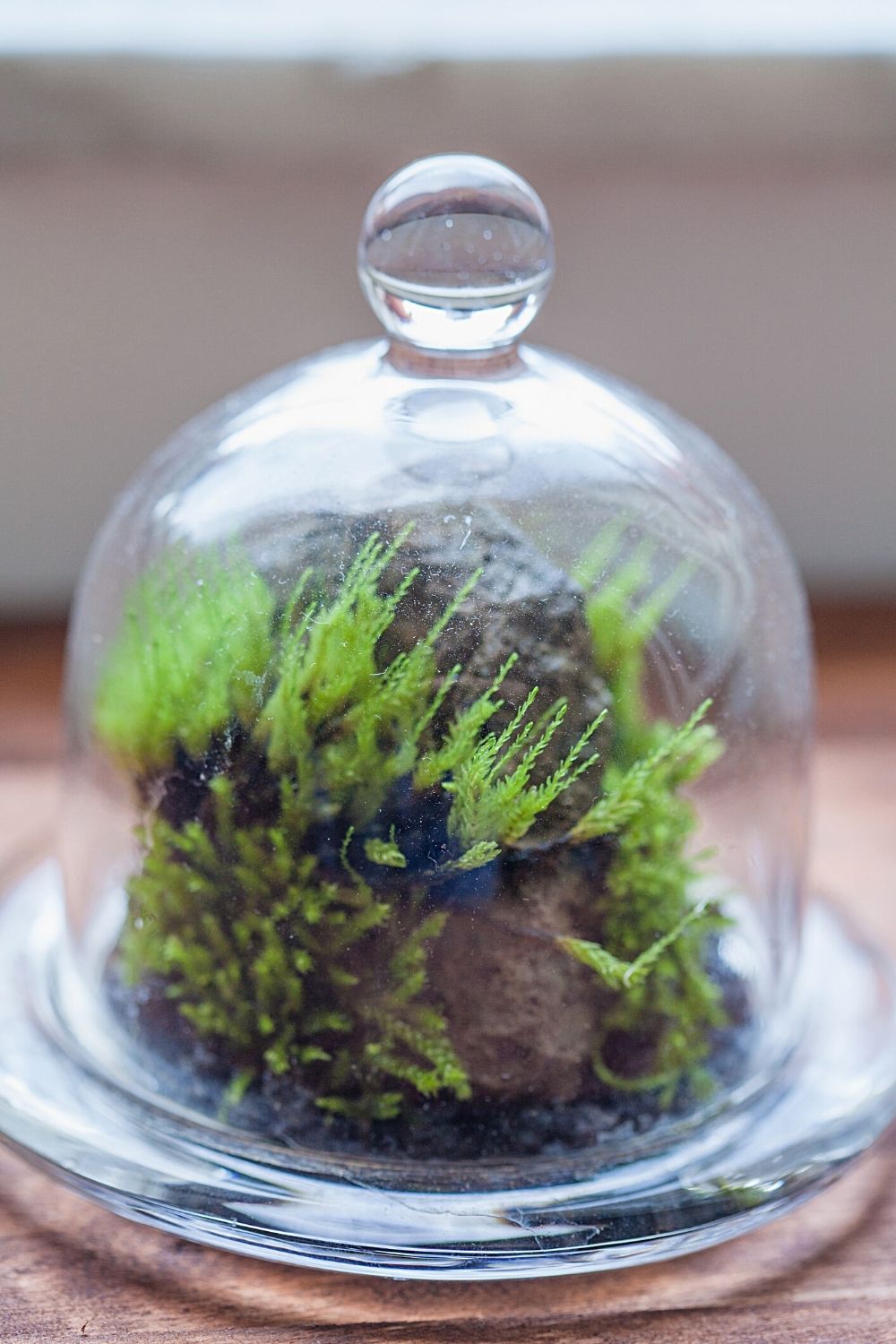
Moss plant is a common flowerless plant that you can grow in a terrarium
Moss is a very common flowerless plant that is non-vascular and tiny in size.
More than 20,000 types of mosses grow in a vegetation cluster, usually in wet and shaded areas, so a closed terrarium is far better for them.
- Scientific name: Bryophyta
- Family: Polytrichaceae
- Temperature: They require almost 20 Fahrenheit (-5 degrees Celsius)
- Fertilizers: They need Nitrogen to grow, which is obtained from soil or by water absorption
- pH: 5 to 6
- Soil: they need soil that is moist and acidic
- Lightening: they need little indirect sunlight
- Growth rate: fast
- Humidity: 70%
Air Plant
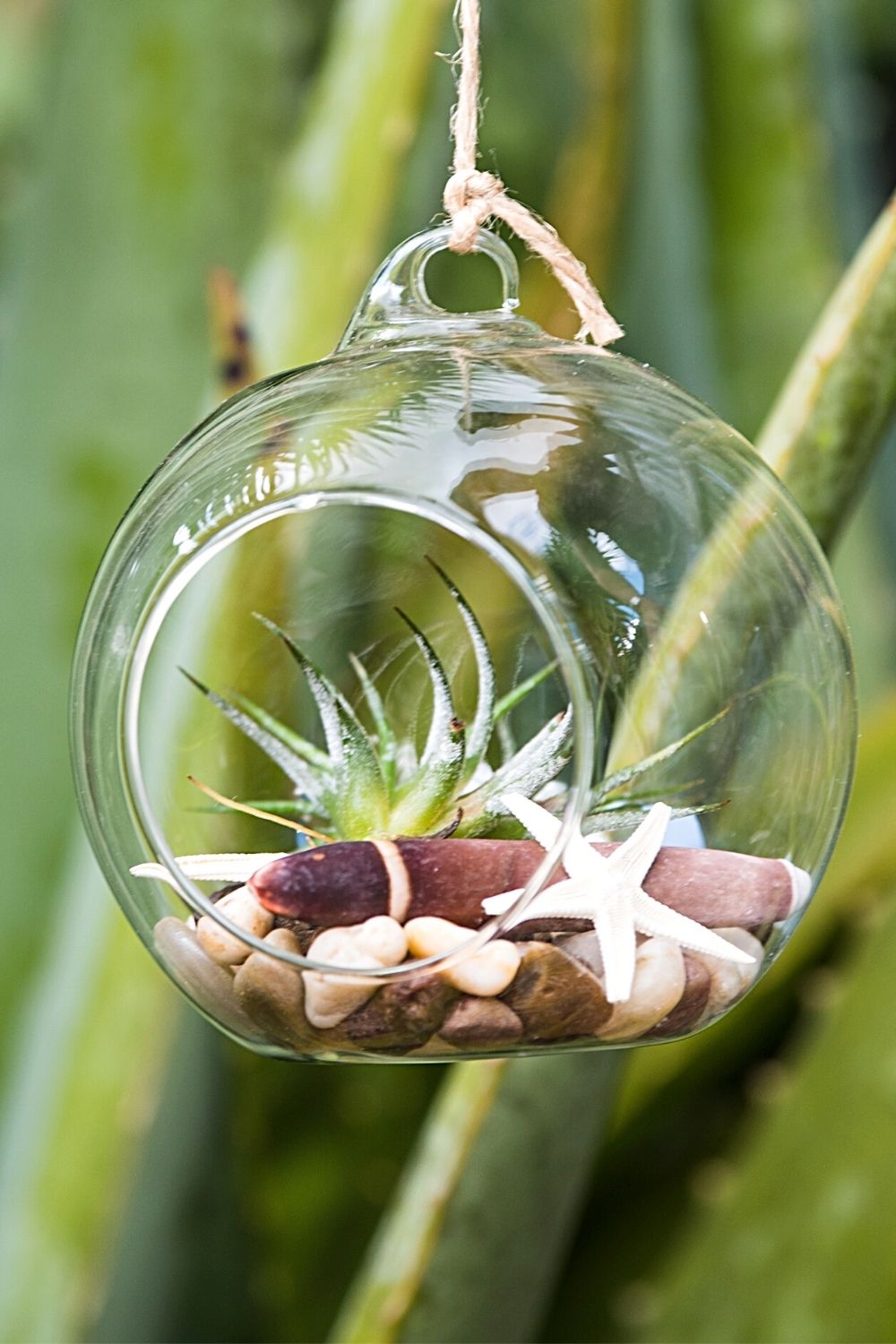
If you’re looking for a low-maintenance plant to grow in a terrarium, Air plant is your best choice
Air plants are simple to grow. They’re usually little and feel more like pets than plants.
They comprise 650 species throughout and have traits such as flaps and a group of small triangle-shaped leaflets.
Air plants are epiphytes according to Clemson University. This means that they are growing on other plants and can grow with no or very airy substrate.
- Scientific name: Tillandsia
- Family: Bromeliaceae
- Temperature: 62 to 80 degrees Fahrenheit (17-27 degrees Celsius)
- Fertilizers: low nitrogen fertilizers can be used once a month
- pH: 5.5 to 6
- Soil: Soil is not required
- Lightening: indirect sunlight
- Growth rate: moderate
- Humidity: 65%
African Violet
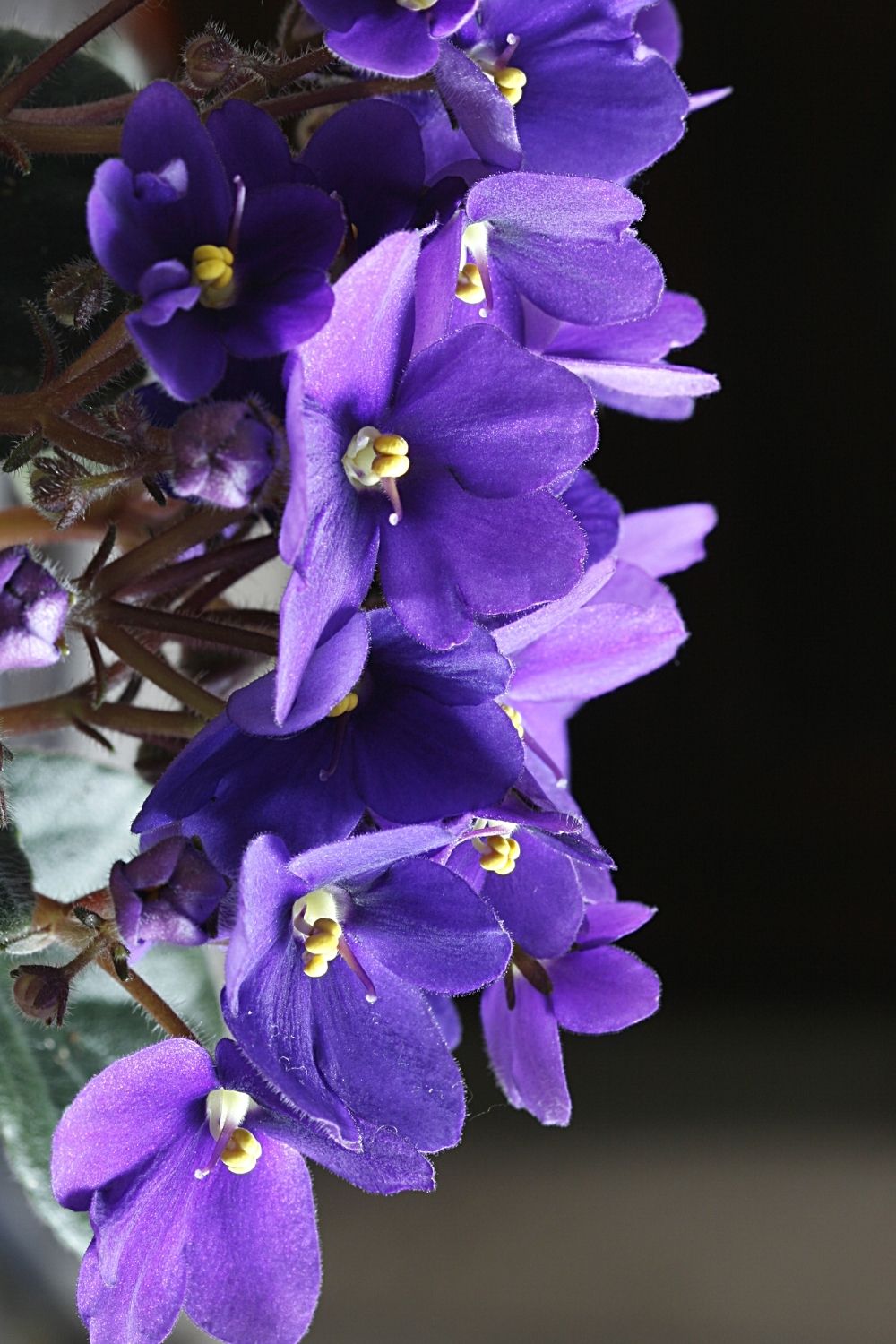
African violet will thrive in a terrarium as it requires hot, damp, and moist atmosphere to survive
These East African plants are small and low-growing, with a variety of leaf forms and hues, notably purple, white, turquoise, and violet.
A terrarium is a good location for them because they require a hot, damp, and moist atmosphere to survive.
- Scientific name: Saintpaulia
- Family: Gesneriaceae
- Temperature: 65 to 80 degrees Fahrenheit (18.5 to 26 degrees Celsius)
- Fertilizers: fertilizer containing phosphorous after every four to six weeks
- pH: between 5.8 and 6.2
- Soil: well-draining and spongy soil
- Lightening: bright and indirect sunlight
- Growth rate: slow
- Humidity: 80%
Maidenhair Fern
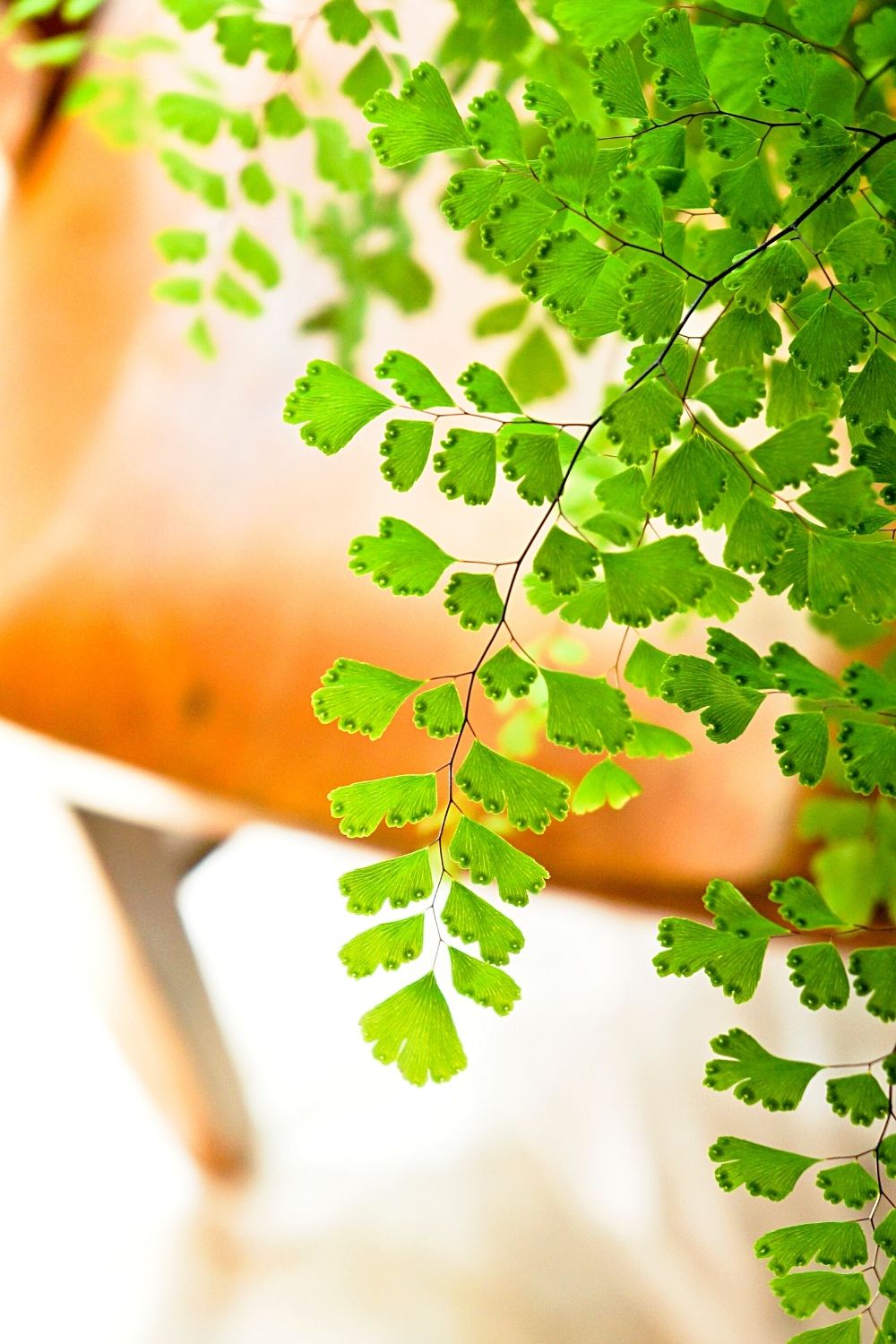
Maidenhair Fern is perfect for terrariums as they’re non-toxic to pets
Maidenhair fern is a non-flowering plant that grows in bunches and has fan-like foliage that flourishes in a damp environment.
They are non-toxic to pets and can be used as a flavor in alcoholic drinks.
- Scientific name: Adiantum
- Family: Pteridaceae
- Temperature: 70 degrees Fahrenheit (21 degrees Celsius)
- pH: 7.2
- Soil: moist, well-drained, and mixture of organic substances
- Lightening: bright and indirect
- Growth rate: slow-growing
- Humidity: 50% to 70%
Nerve Plant
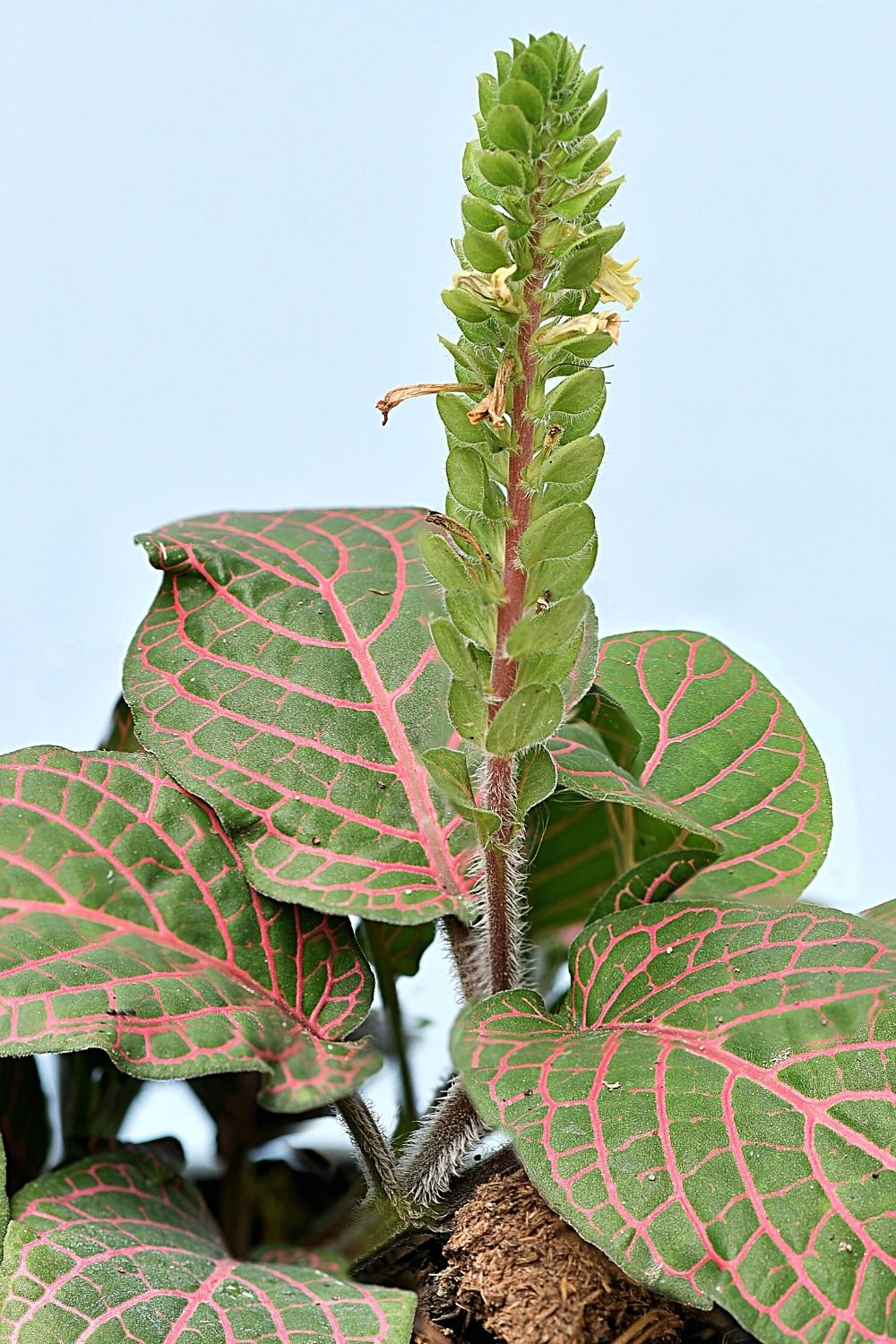
Nerve Plant is another great plant that you can grow in a closed terrarium
They thrive in closed terrariums and are recognized for their vibrant green foliage with brightly colored leaf veins.
If there is a lack of nutrients or light, the foliage of this plant may become curled, yet it develops efficiently in the right circumstances.
- Scientific name: Fittonia albivenis
- Family: Acanthaceae
- Temperature: 70 degrees Fahrenheit (18 degrees Celsius)
- Fertilizers: fertilize them weekly with a liquid fertilizer
- pH: 6.5
- Soil: moist and well-drained
- Lightening: bright and indirect sunlight
- Growth rate: fast
- Humidity: 60% to 70%
Golden Pothos
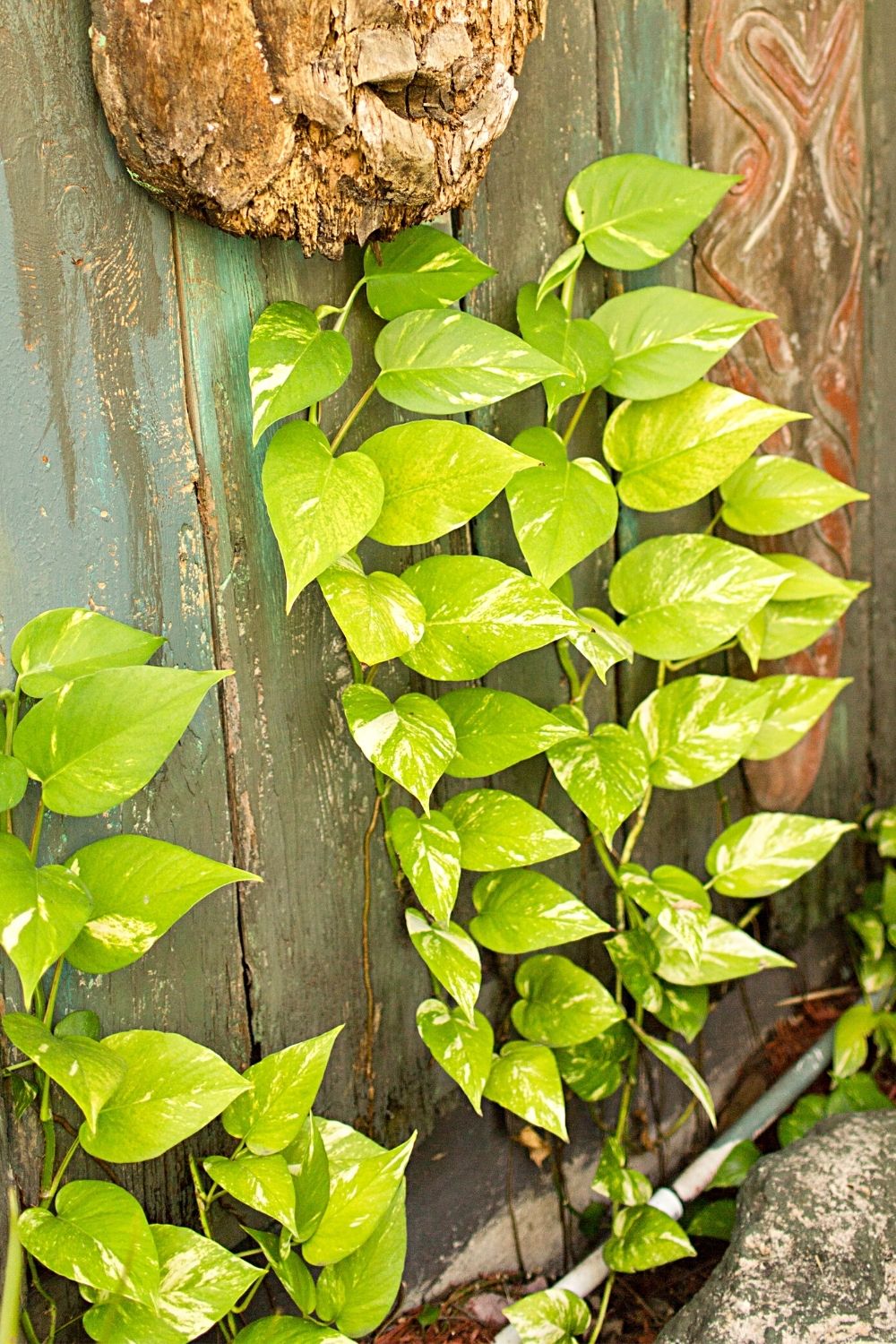
The Golden Pothos is another great plant to grow in a closed terrarium as it grows swiftly
When grown in a closed terrarium, Golden Pothos develops swiftly.
It’s also considered a fortunate plant since it increases the owner’s prosperity and removes common pollutants from the air, although it’s harmful to pets.
They are only found in the South Pacific islands.
- Scientific name: Epipremnum aureum
- Family: Arums
- Temperature: 70 to 90 degrees Fahrenheit (21 to 32 degrees Celsius)
- Fertilizers: fertilize them monthly with a liquid fertilizer
- pH: 6.1 to 6.5
- Soil: well-draining the soil to balance water holding
- Lightening: full light with a partial shade
- Growth rate: fast
- Humidity: 50% to 70%
Polka Dot Plant
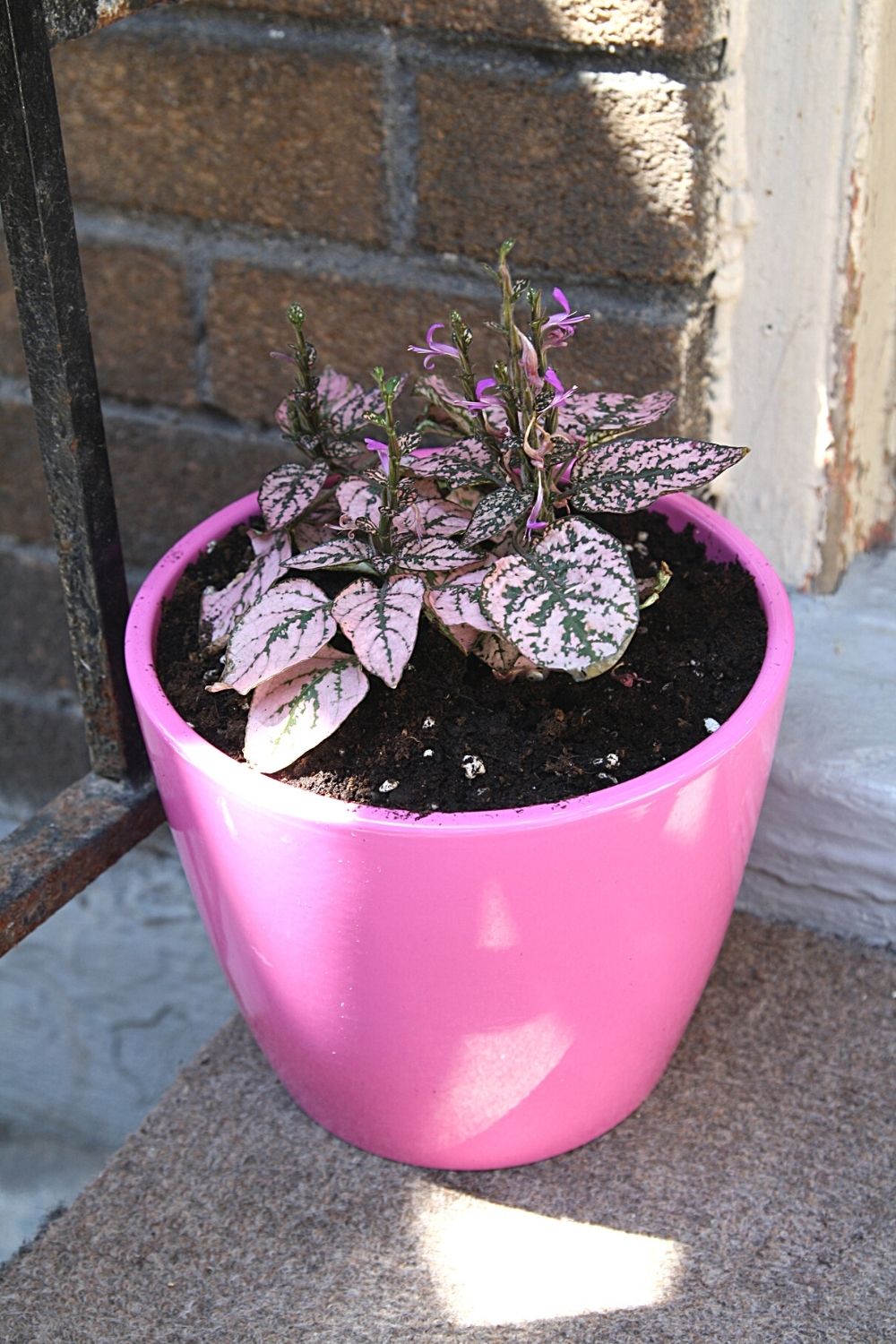
Polka Dot Plant, aka Freckle Plant, is another colorful plant to grow in a terrarium
The polka dot plant is a tiny shrub with rainbow leaf combinations that stand out among all the surrounding plants.
The most common polka dot plants, also referred to as freckle plants, feature pink-based foliage with green colored dots.
- Scientific name: Hypoestes Phyllostachys
- Family: Acanthaceae
- Temperature: 75 degrees Fahrenheit (24 degrees Celsius)
- Fertilizers: once a week with half teaspoon of plant food mixed in a per water gallon
- pH: 6.1 to 7.3
- Soil: rich in organic matter and well drainage
- Lightening: medium and indirect sunlight
- Growth rate: grows fast
- Humidity: 70%
Spider Plant
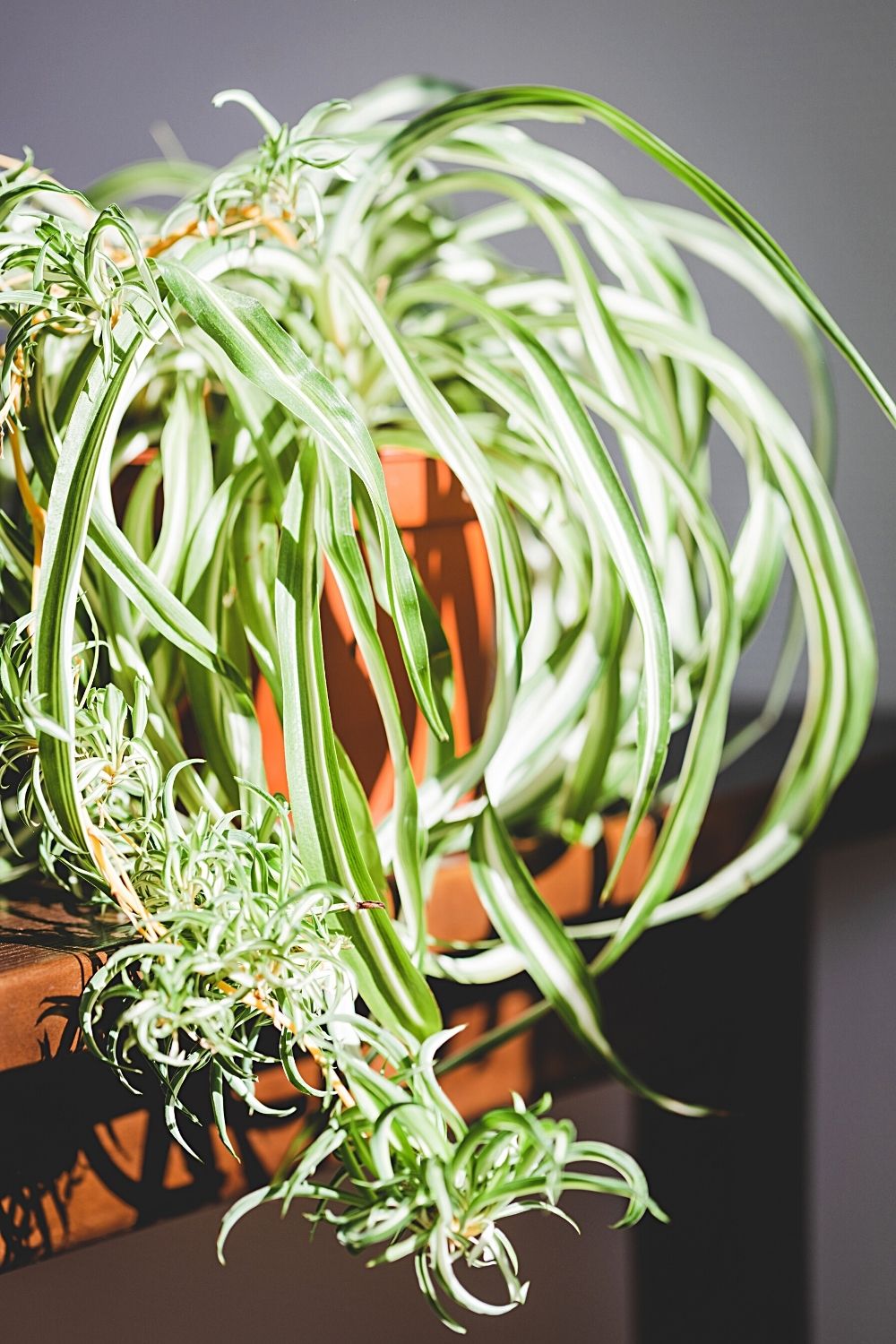
Spider plant, aside from being a great plant for terrariums, helps in purifying the air in indoor spaces
They can filter the air in homes and interior areas by removing pollutants like benzene, xylene, and carbon monoxide from the environment.
They can retain water in their huge, thick, and abundant leaves, allowing plants to go without irrigation for long periods of time.
- Scientific name: Chlorophytum comosum
- Family: Asparagaceae
- Temperature: 70 to 90 degrees Fahrenheit (21 to 32 degrees Celsius)
- Fertilizer: Every two weeks in the plant’s growing season
- pH: 6.1 to 6.5
- Soil: well-draining, loamy, and soggy soil
- Lighting: bright and indirect sunlight
- Growth rate: Fast
Aluminum Plant
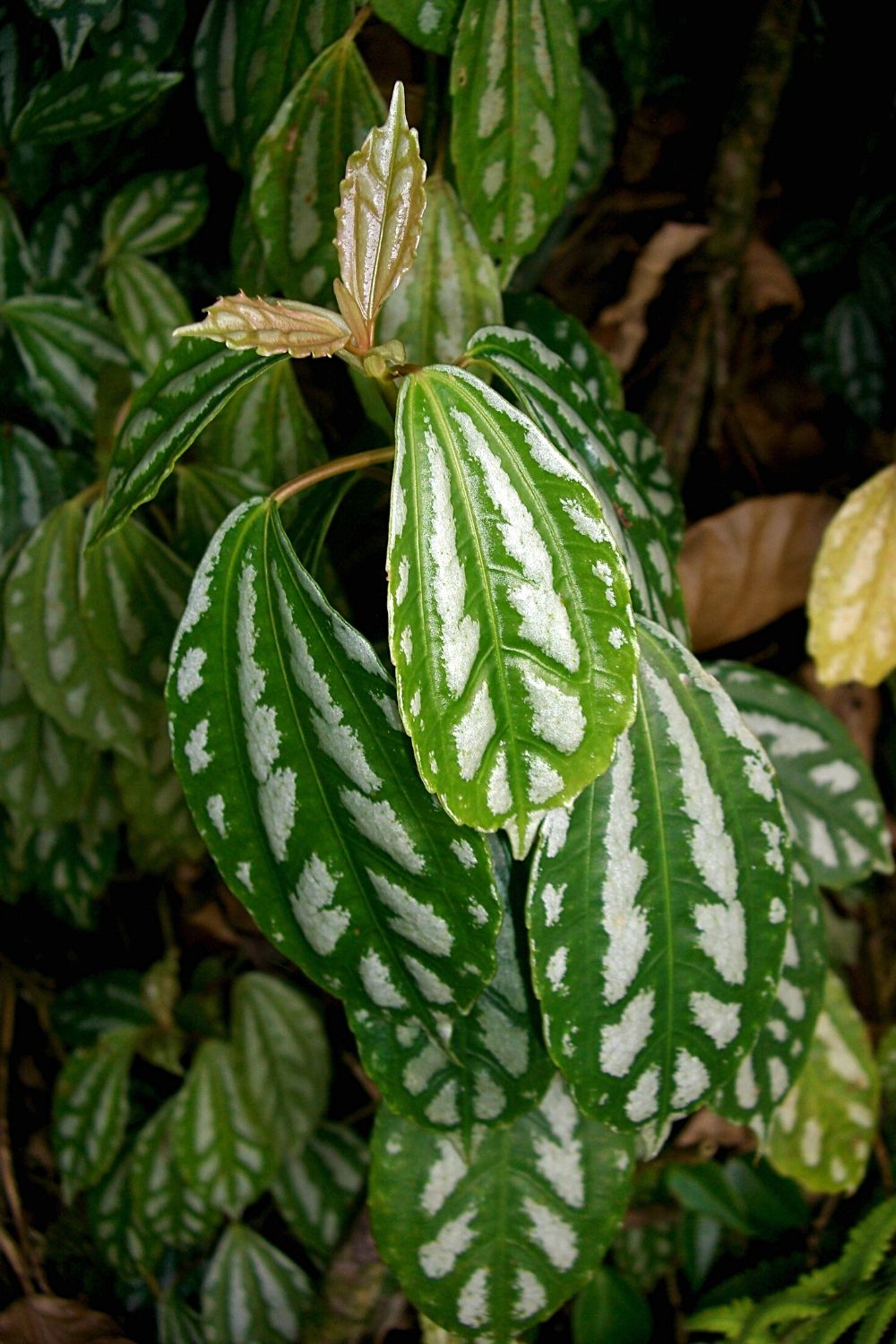
Aluminum plant is another great plant to grow in a terrarium due to its leaves having silvery stripes
Because of its unusual patterns, watermelon pilea is also known as an aluminum plant, and each leaf has silvery stripes that give a striking metallic impression.
The plant’s leaves are the most appealing aspect, with silver decorations on each leaf, and only a few of these plants will blossom.
- Scientific name: Pilea cadierei
- Family: Urticaceae
- Temperature: 60 to 75 degrees Fahrenheit (15 to 23 degrees Celsius)
- Fertilizers: once a month during the growing season
- pH: 4.3
- Soil: a mixture of sandy soil
- Lightening: 4 hours of indirect sunlight per day
- Growth rate: fast
- Humidity: 70% to 80%
Baby’s Tears
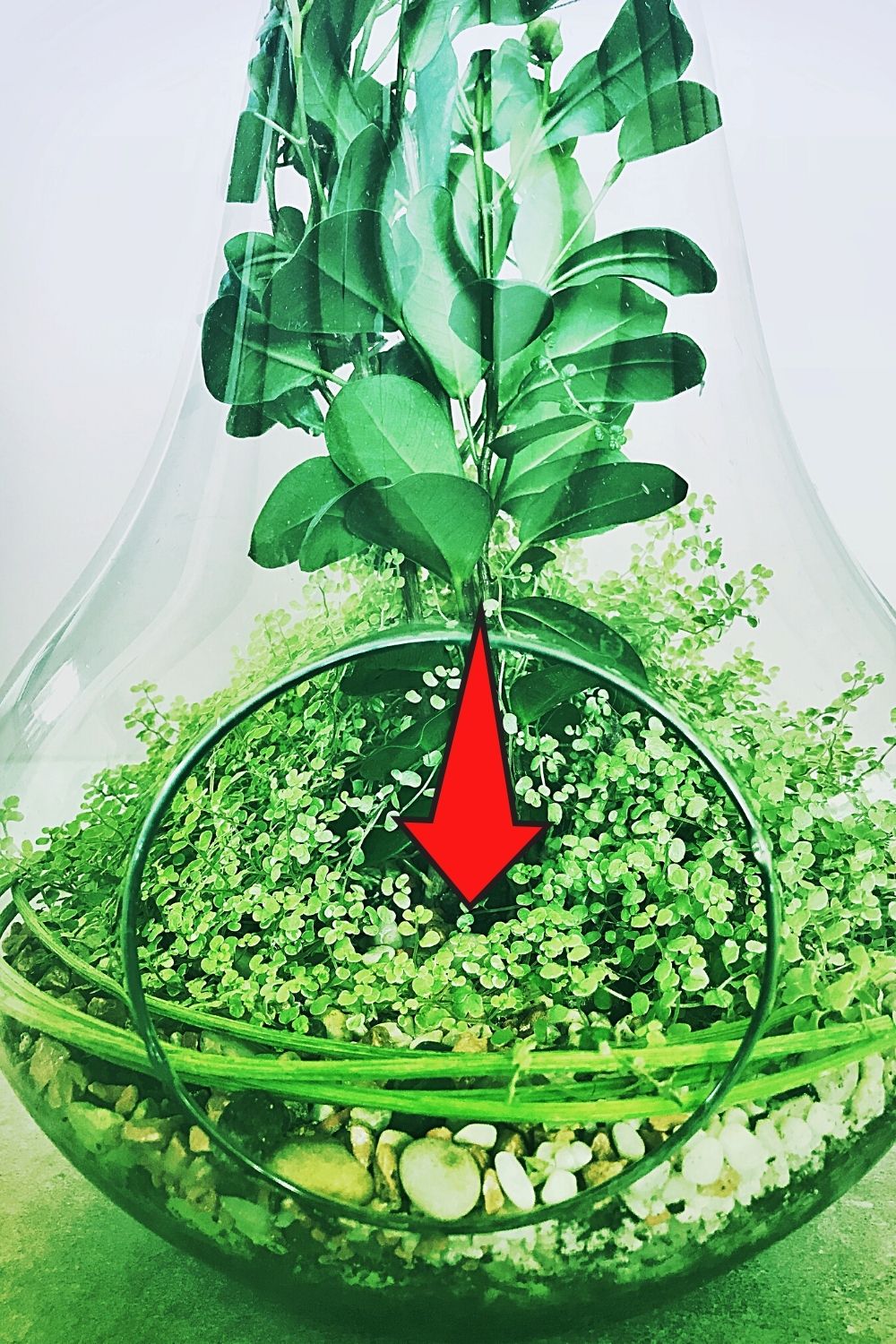
Baby’s tears will thrive best in an open terrarium as it requires good air circulation
Baby’s tears are ideal for an open terrarium since they require good air circulation; they are also easy to grow for inexperienced growers.
The rich green little leaves will wither in the winter and be replaced by tiny white blooms in the spring, making the return more appealing.
- Scientific name: Hemianthus micranthemoides
- Family: Urticaceae
- Temperature: 60 to 75 degrees Fahrenheit (15 to 23 degrees Celsius)
- Fertilizers: once a month during the summer and spring
- pH: 6 to 7.5
- Soil: rich soil mixed with loam and charcoal
- Lightening: bright and filtered light
- Growth rate: fast
- Humidity: 75%
Creeping Fig
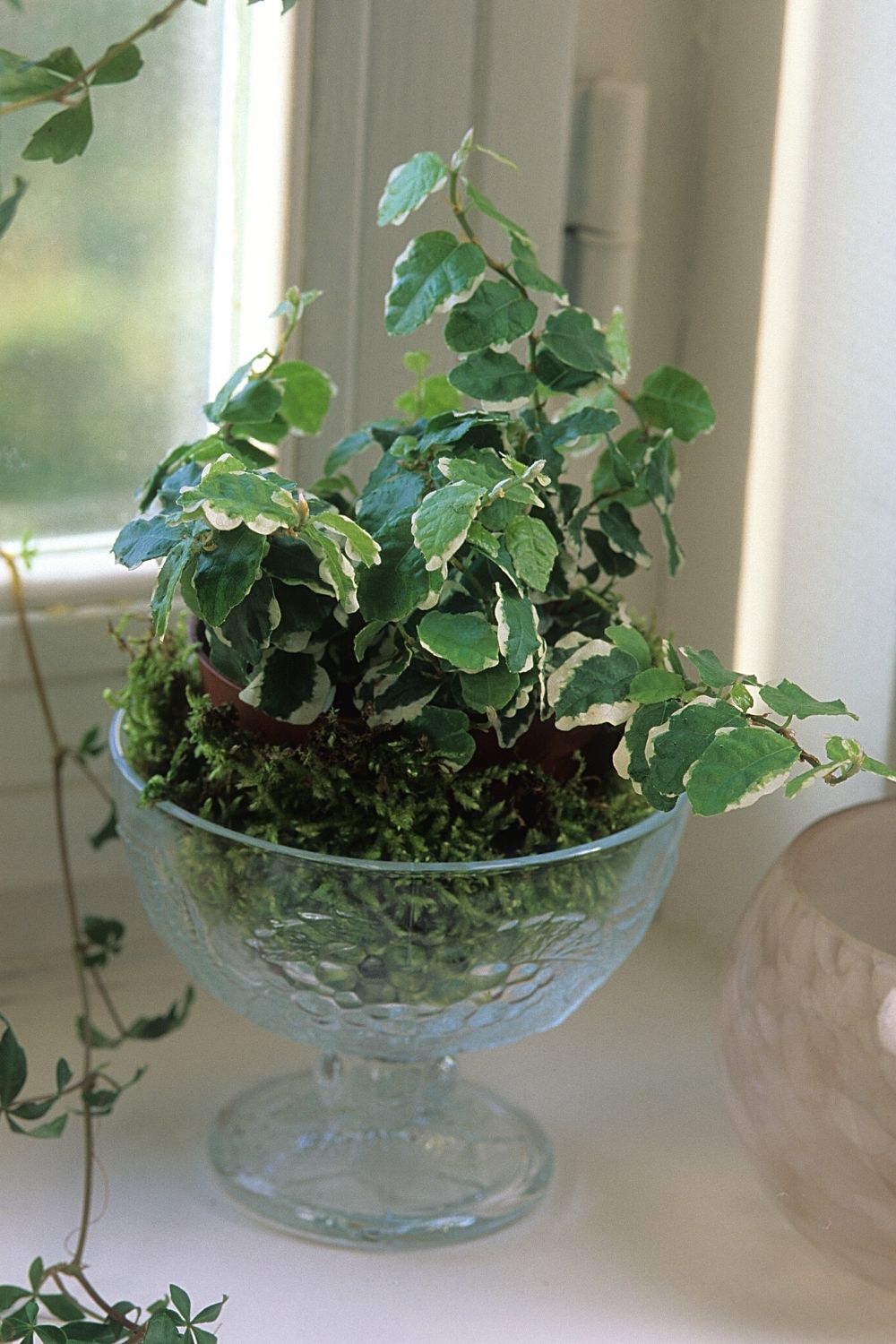
Creeping fig, if grown in a terrarium, closely resembles a forest
The cluster and variety of leaves of creeping fit may resemble a forest in a terrarium, but they grow easily and looks attractive in hanging small baskets.
This plant contains more than 850 species, and the most common are:
- Arina Creeping Fig
- Bellus Creeping Fig
- Curly Creeping Fig
- Dorty Creeping Fig
There are basic requirements:
- Scientific name: Ficus pumila
- Family: Mulberry
- Temperature: 65 to 85 degrees Fahrenheit (18 to 29 degrees Celsius)
- Fertilizers: once a month during summer and spring
- pH: 5.5 to 7.5
- Soil: Well-draining
- Lightening: partial shade is required
- Growth rate: moderate
- Humidity: 50%
Black Mondo Grass
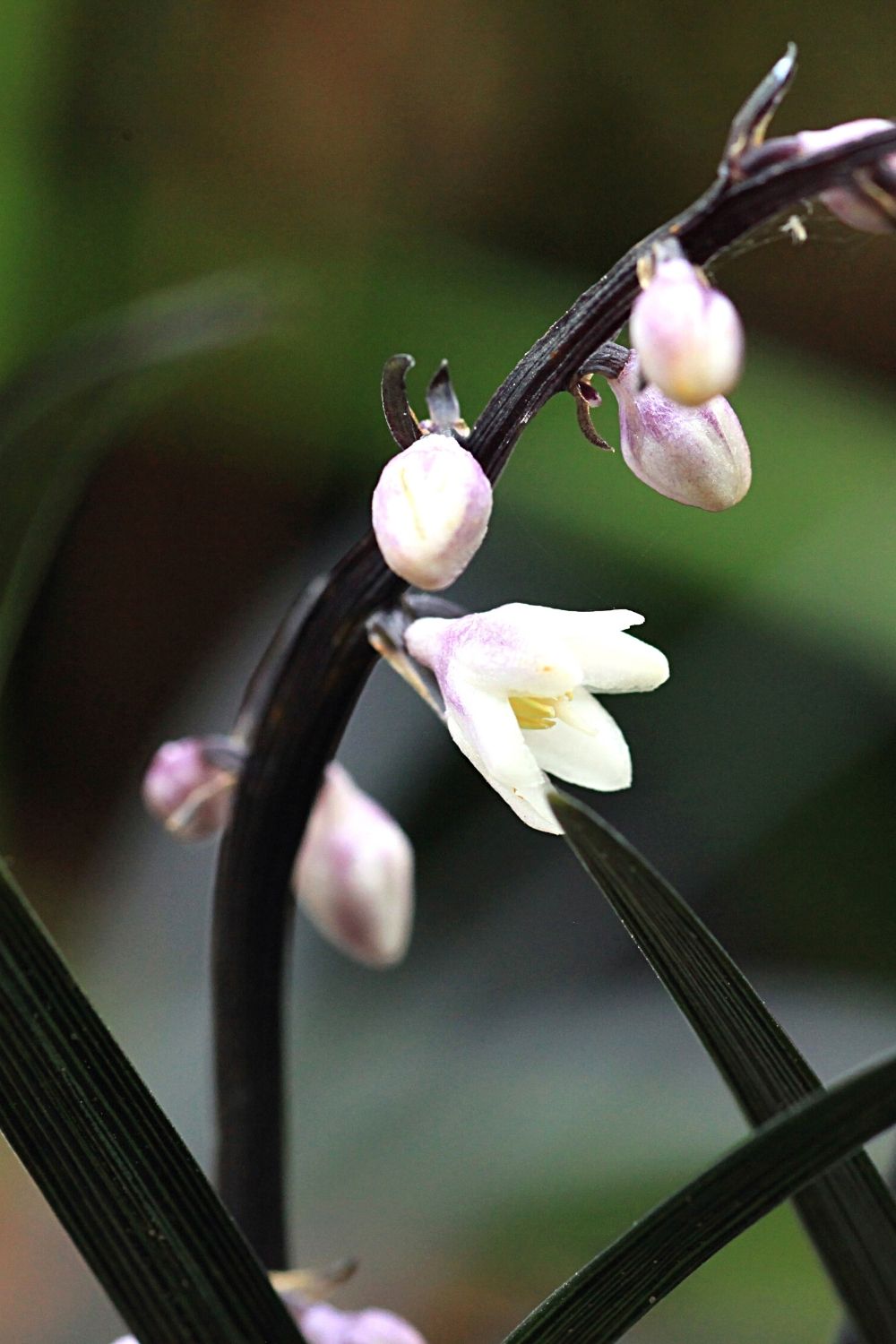
Black Mando Grass, used to be planted in shady areas, is another great option to grow in a terrarium
This plant is known as grass because the structure of its leaves resembles thin blades of grass available in black and dark purple colors.
Black mondo does not contain a stem, so it is usually used to cover shady areas, and in summer, tiny pinkish flowers grow on it.
- Scientific name: Ophiopogon planiscapus
- Family: Asparagaceae
- Temperature: It is a frost tolerant plant
- Fertilizer: fertilize regularly in spring
- pH: 5.5 to 6.5
- Soil: spongy, well-draining, and moist
- Lightening: exposed to full sun and partial shade is required
- Growth rate: slow
Rattlesnake Plantain
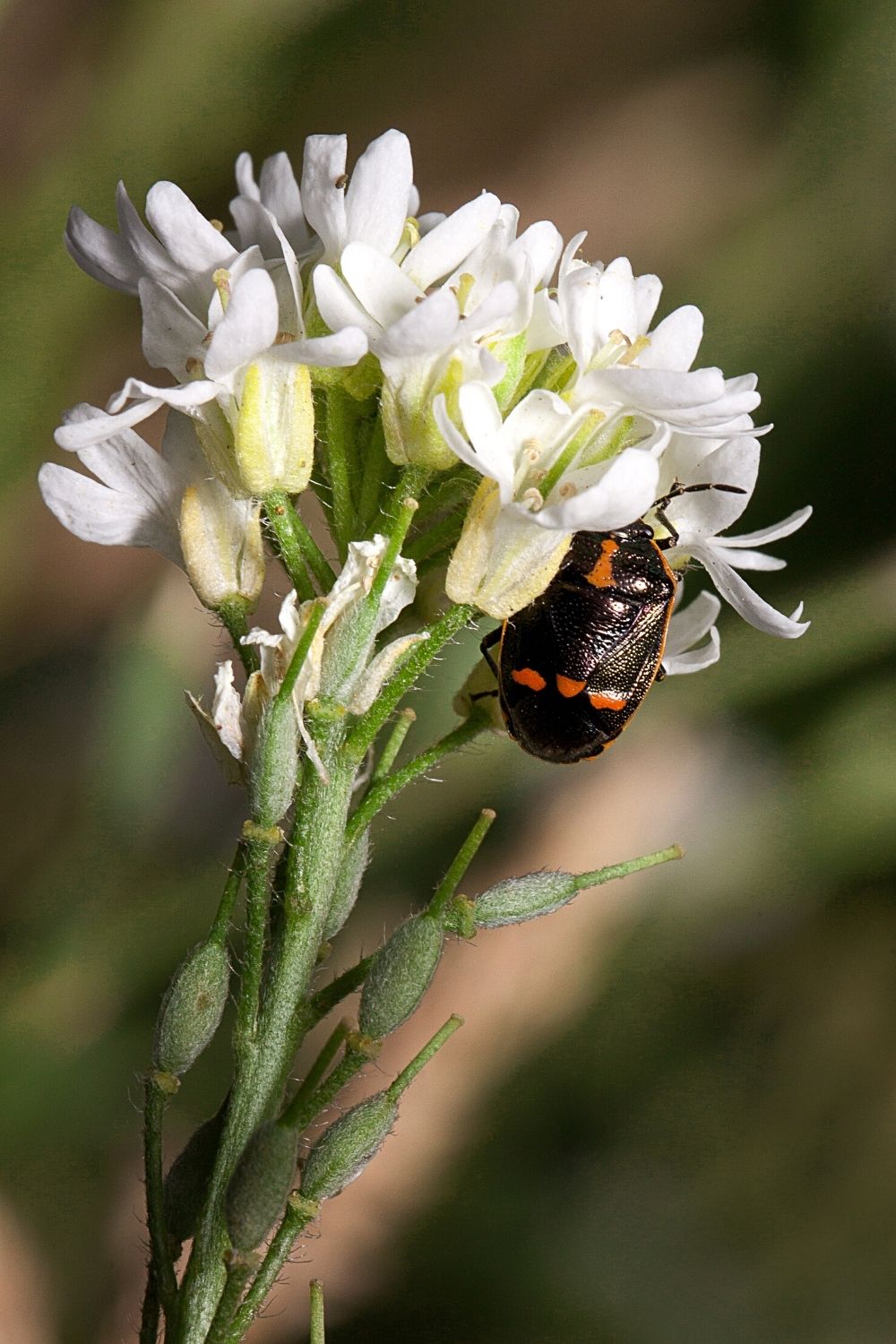
Rattlesnake plantain is another great option to plant in a terrarium as it helps in bringing in fresh air by reducing toxic substances
Rattlesnake Plantain helps in bringing fresh air by reducing toxic substances from the air and releasing positive energy.
The huge leaves are mixed with different greenish hues and have a wavy texture across their margins.
- Scientific name: Goodyera
- Family: Orchid
- Temperature: 77 degrees Fahrenheit (25 degrees Celsius)
- Fertilizers: fertilize them during the growing season from spring to fall
- pH: 5.1 to 6.5
- Soil: well-drainage, organic-rich and moist
- Lightening: little exposure to the sun
- Humidity: Moderate
Strawberry Begonia
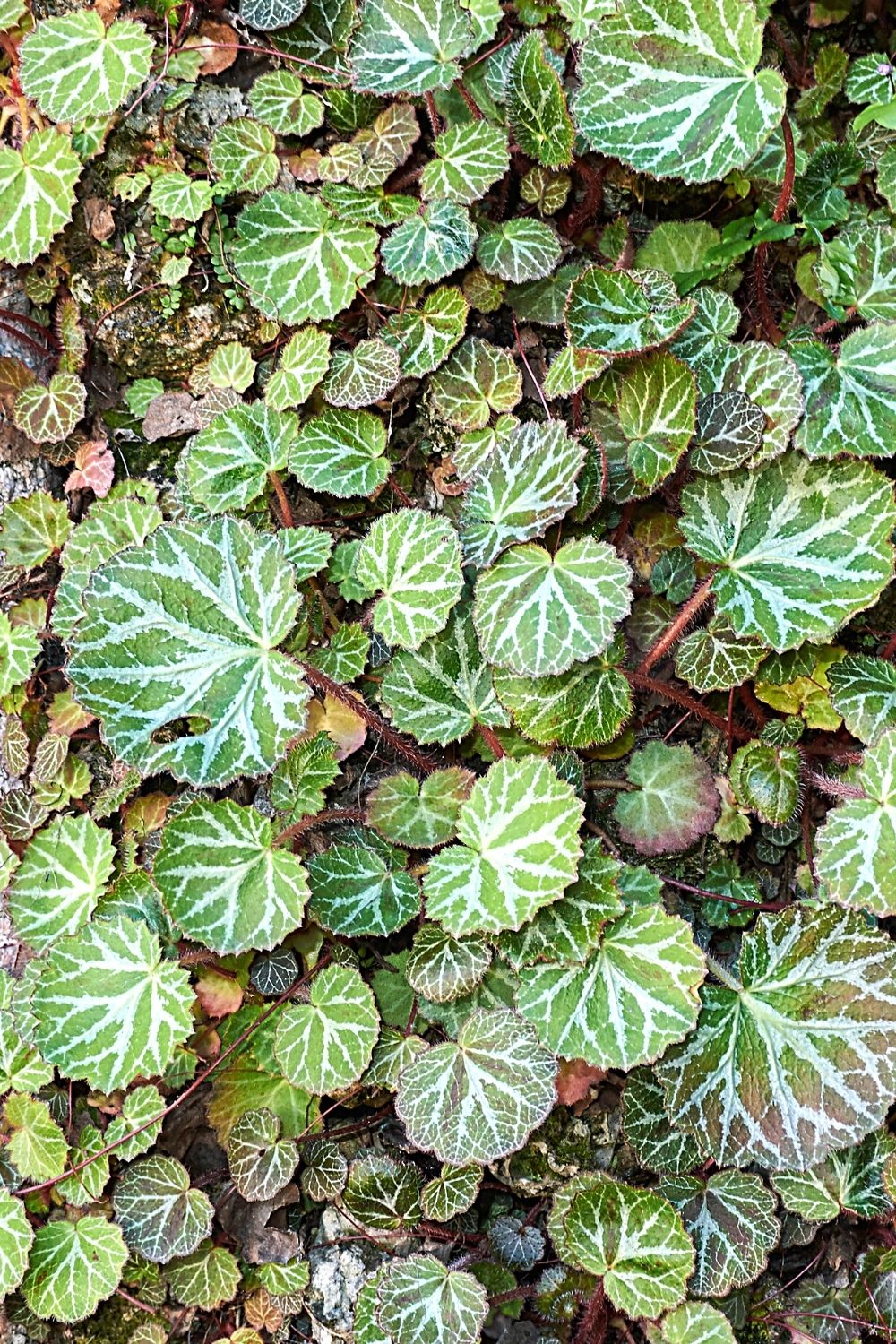
The attractive and rounded leaves of the Strawberry begonia is a great addition to a terrarium
There are attractive rounded leaves present in the bunch, so they can run on the floor and cover the ground.
However, they can cause the following symptoms in animals:
- Oral sores
- Nausea
- Vomiting
- Dehydration
- Swelling of tongue
- Redness
They are non-poisons in nature, but some chemicals are present that can cause problems, which has a vulnerable and adverse effect.
- Scientific name: Saxifraga stolonifera
- Family: Saxifragaceae
- Temperature: 50 to 75 degrees Fahrenheit (10 to 24 degrees Celsius)
- Fertilizers: during the growing season, fertilize them with a dilute solution once a month
- pH: Neutral to acidic
- Soil: spongy, lightweight but moist soil
- Lightening: partial covered and indirect sunlight
- Growth rate: fast-growing
- Humidity: 40% to 50%
Friendship Plant
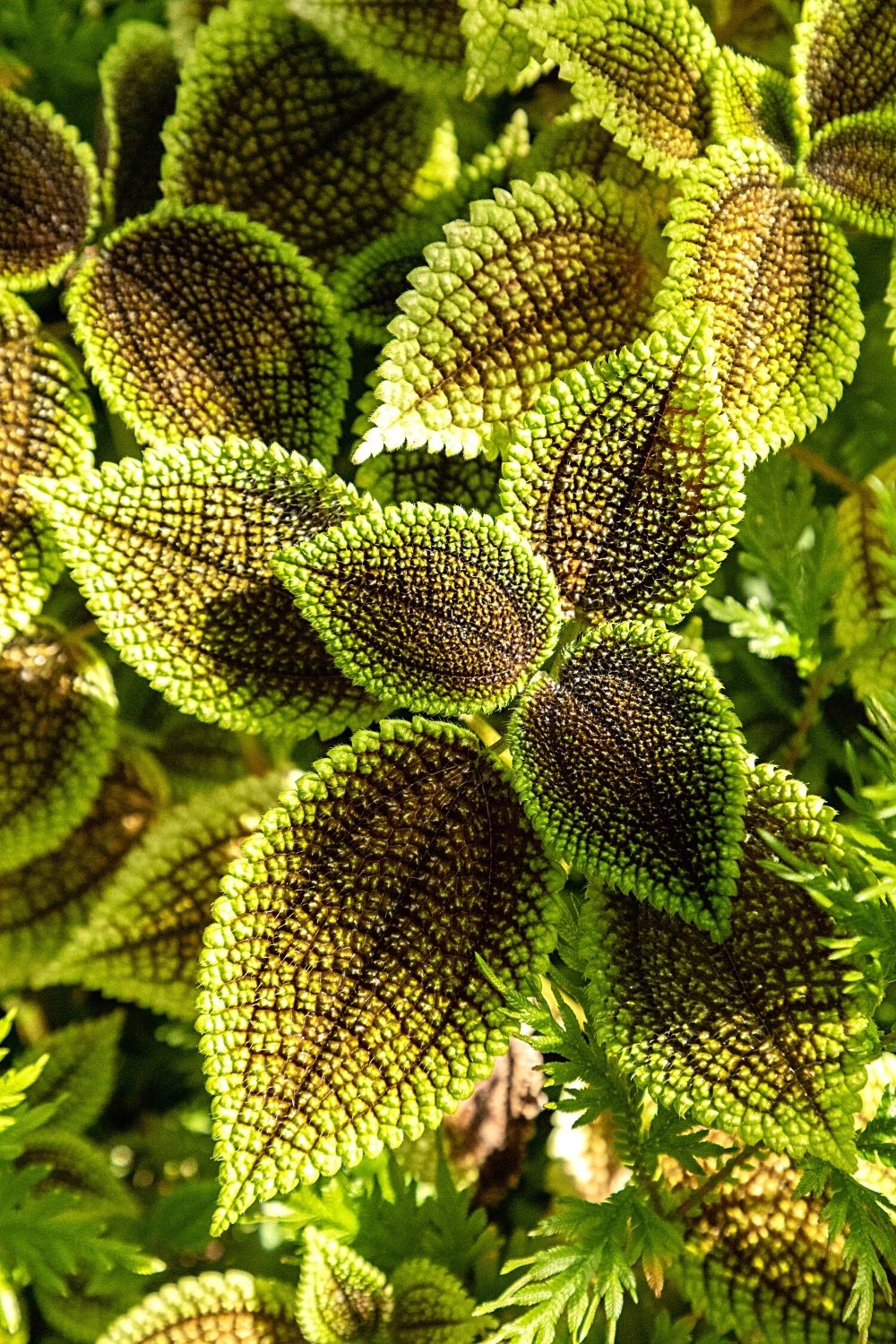
Another easy-to-grow plant in a terrarium is the Friendship plant
The friendship plant is one of the houseplants that spreads positive energy. Due to the unique character of offshoots, we can share them with friends and family.
They need proper care when they are immature but easy to grow and harmless to cats and dogs.
- Scientific name: Pilea involucrata
- Family: Urticaceae
- Temperature: 65 to 75 degrees Fahrenheit (18-23 degrees Celsius)
- Fertilizers: fertilize monthly with a dilute solution in spring and summer
- pH: 6 to 7
- Soil: rich and mixture of peat moss
- Lightening: indirect sunlight at least 6 to 8 hours per day
- Growth rate: moderate
- Humidity: 60% to 90%
Flame Violet
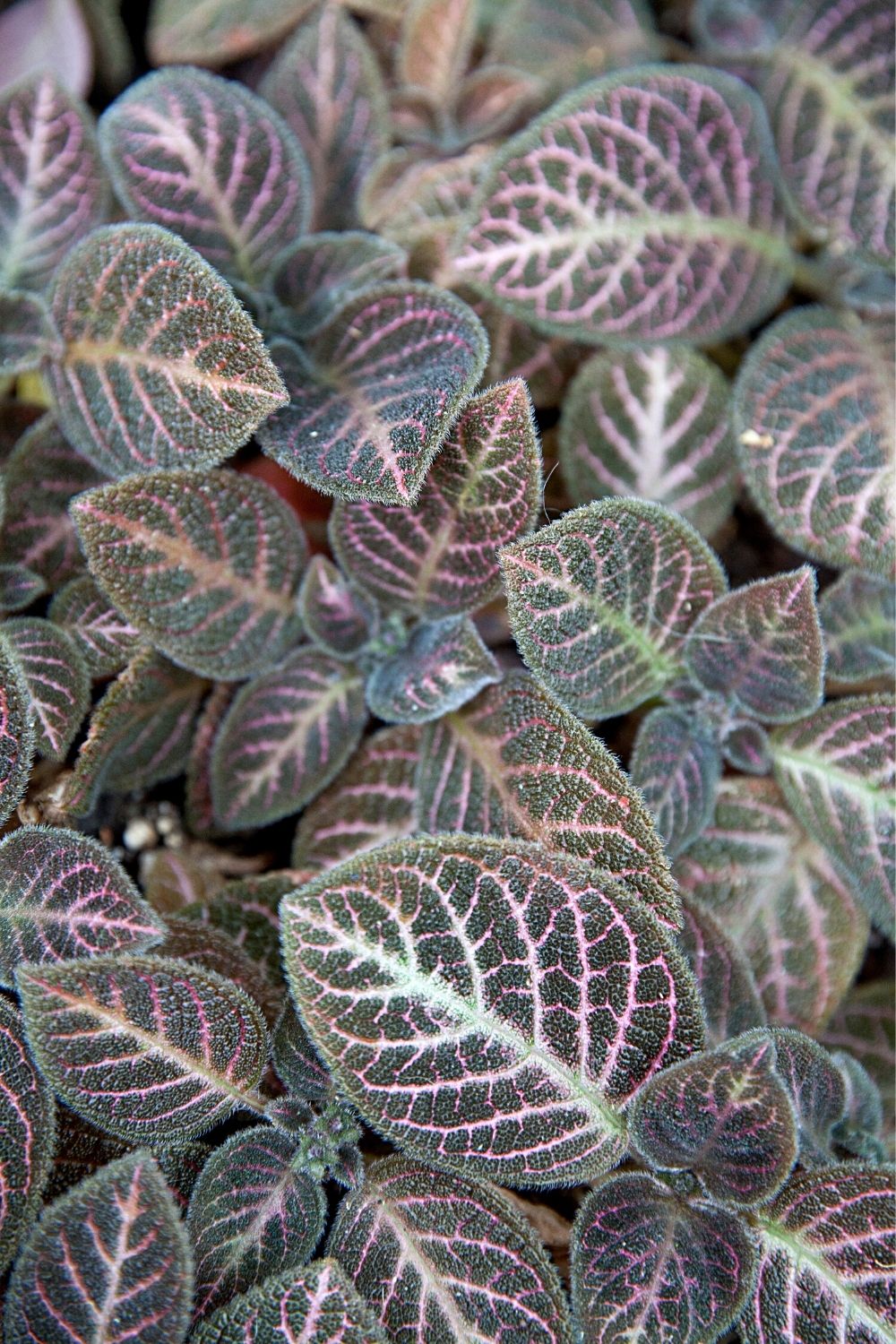
Flame violet is another attractive plant you can grow in a terrarium
They are small, elegant, and attractive little plants that have green, dark red, brown, purple, or pinkish tones with the deep veins of silver color on them.
The plant produces many stems that cover the surface of the wall.
- Scientific name: Episcia cupreata
- Family: Gesneriaceae
- Temperature: 55 to 75 degrees Fahrenheit (13 to 24 degrees Celsius)
- Fertilizers: fertilize them twice a month but not in winters
- pH: 6 to 6.5
- Soil: organically rich mixture and well-drained
- Lightening: requires bright light but not directly towards the sun
- Humidity: 50%
Dragon Tree
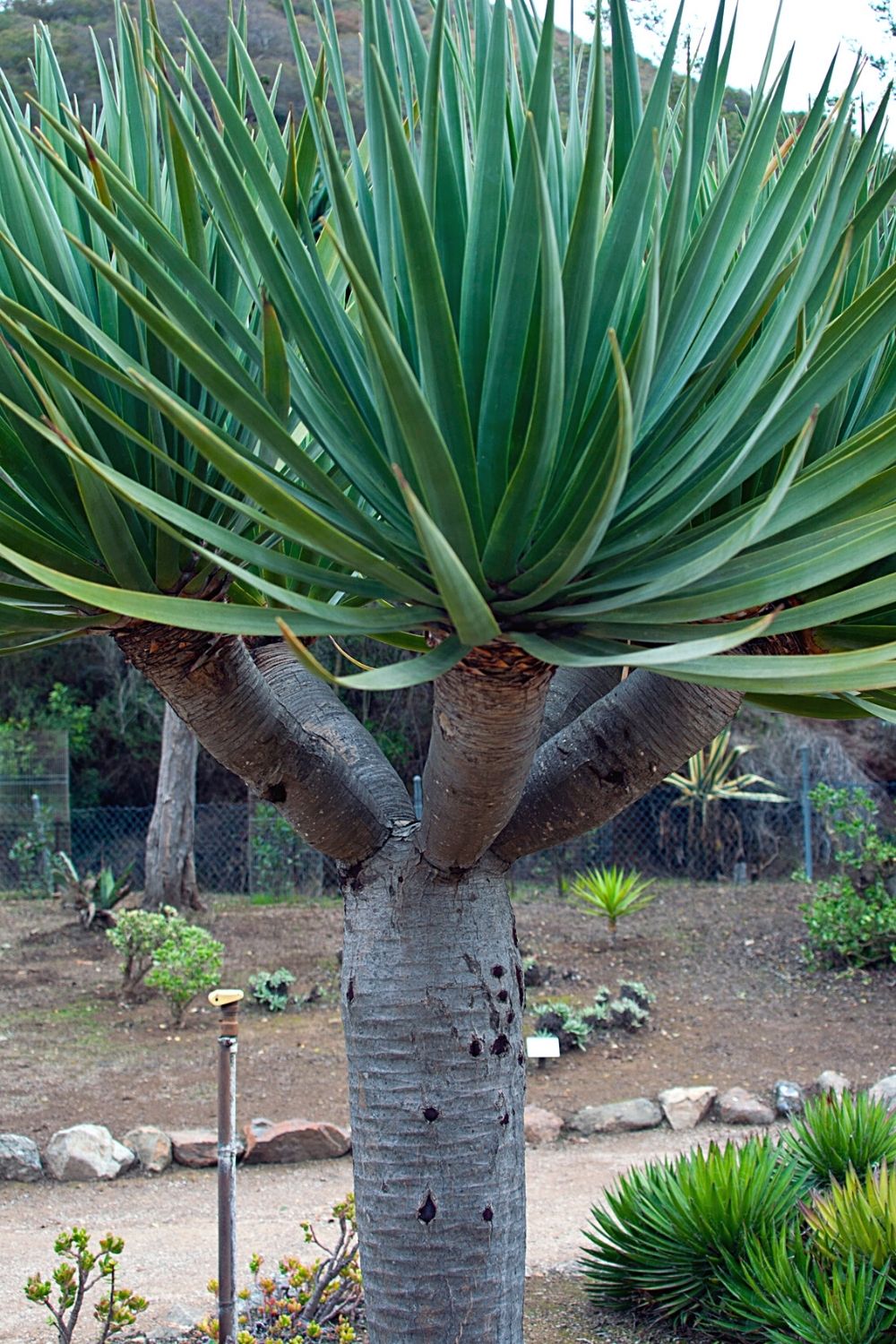
Dragon tree, with its sharp edges, is another great addition to a terrarium
It is an attractive plant with sharp edges that looks like a sword, and due to its striking attractiveness, it is known as the great entry plant.
It is non-toxic for humans but not consumable hence can be harmful to animals and pets, so it should be kept far from them.
- Scientific name: Dracaena draco
- Family: Asparagaceae
- Temperature: 70 to 80 degrees Fahrenheit (21 to 26 degrees Celsius)
- Fertilizers: fertilizer once a month from March to September
- pH: 6 to 6.5
- Soil: loamy, loose, moist, and spongy soil is required
- Lightening: bright, indirect, and sometimes dimmer light
- Growth rate: slow-growing
- Humidity: 60% to 80%
Button Fern
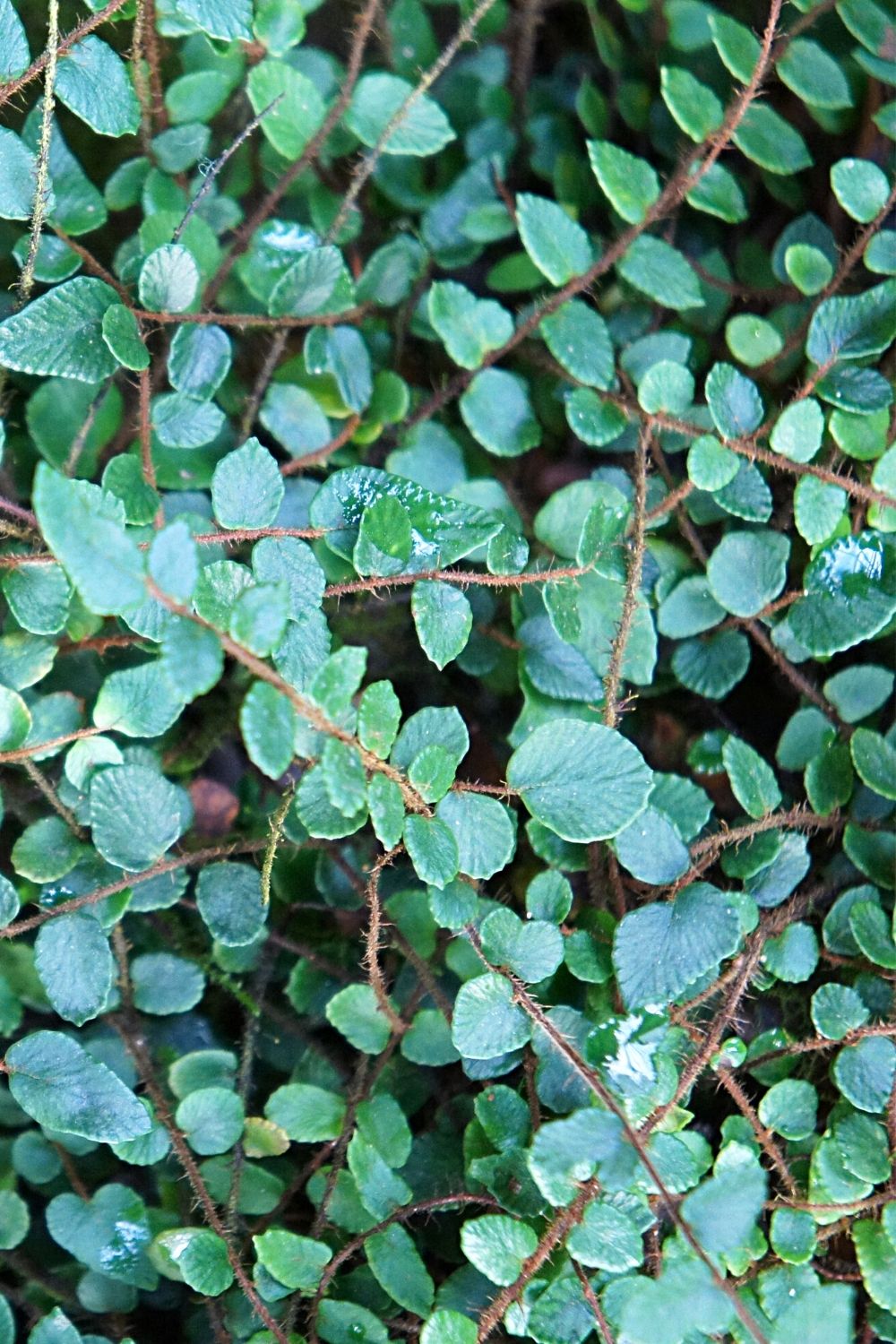
The tiny, round leaves of a Button fern looks great when placed in a terrarium
Button fern is innate in New Zealand, so most of the plants are produced there. They are tiny with round leaves and easy to care for.
There is a toxin in spores, which may affect the health of humans and animals if ingested orally and leads to cardiac problems.
- Scientific name: Pellaea rotundifolia
- Family: Pteridaceae
- Temperature: 60 to 75 degrees Fahrenheit (16-24 degrees Celsius)
- Fertilizers: fertilize them during summer and spring
- pH: 4 to 7
- Soil: moist, loamy, and well absorbent but not soggy
- Lightening: partial exposure to the sun but mostly in shady areas
- Growth rate: slow grower
- Humidity: 50%
Rosary Vine
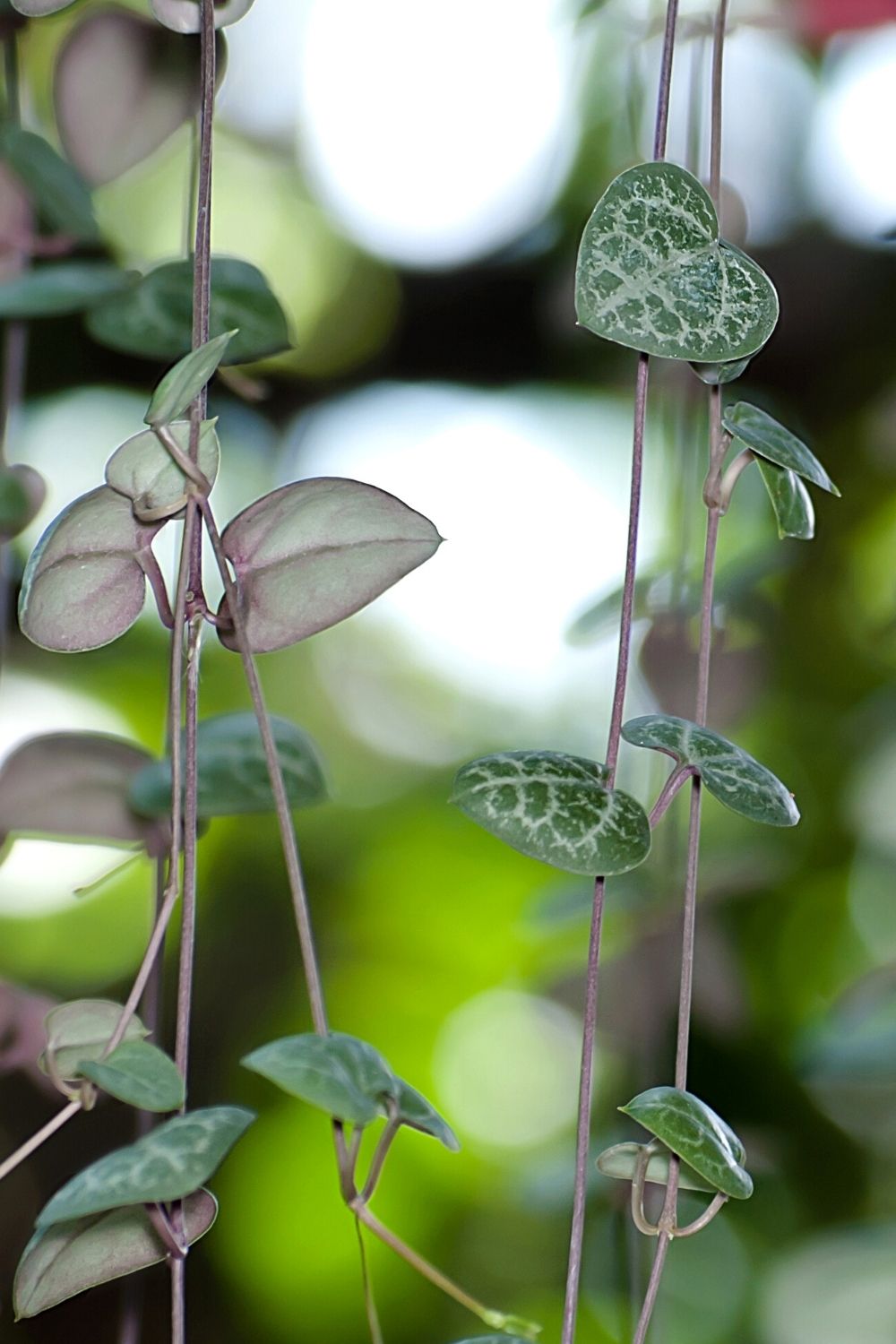
Rosary vine, aka String of Hearts, is another stunning plant to grow in a terrarium
The Rosary vine is also known as the string of the heart due to its unique fleshy and healthy leaves on the stem.
The seeds of this plant, if chewed, can cause death in both humans and animals, but their leaves are used for herbal purposes.
- Scientific name: Ceropegia
- Family: Dogbanes
- Temperature: 64 to 75 degrees Fahrenheit (18-24 degrees Celsius)
- Fertilizers: fertilize them in spring after every two weeks
- pH: 6.1 to 7.5
- Soil: a well-drained mixture of potting soil
- Lightening: indirect sun exposure and bright light at least for one hour
- Growth rate: fast-growing
- Humidity: 45%
Watermelon Peperomia
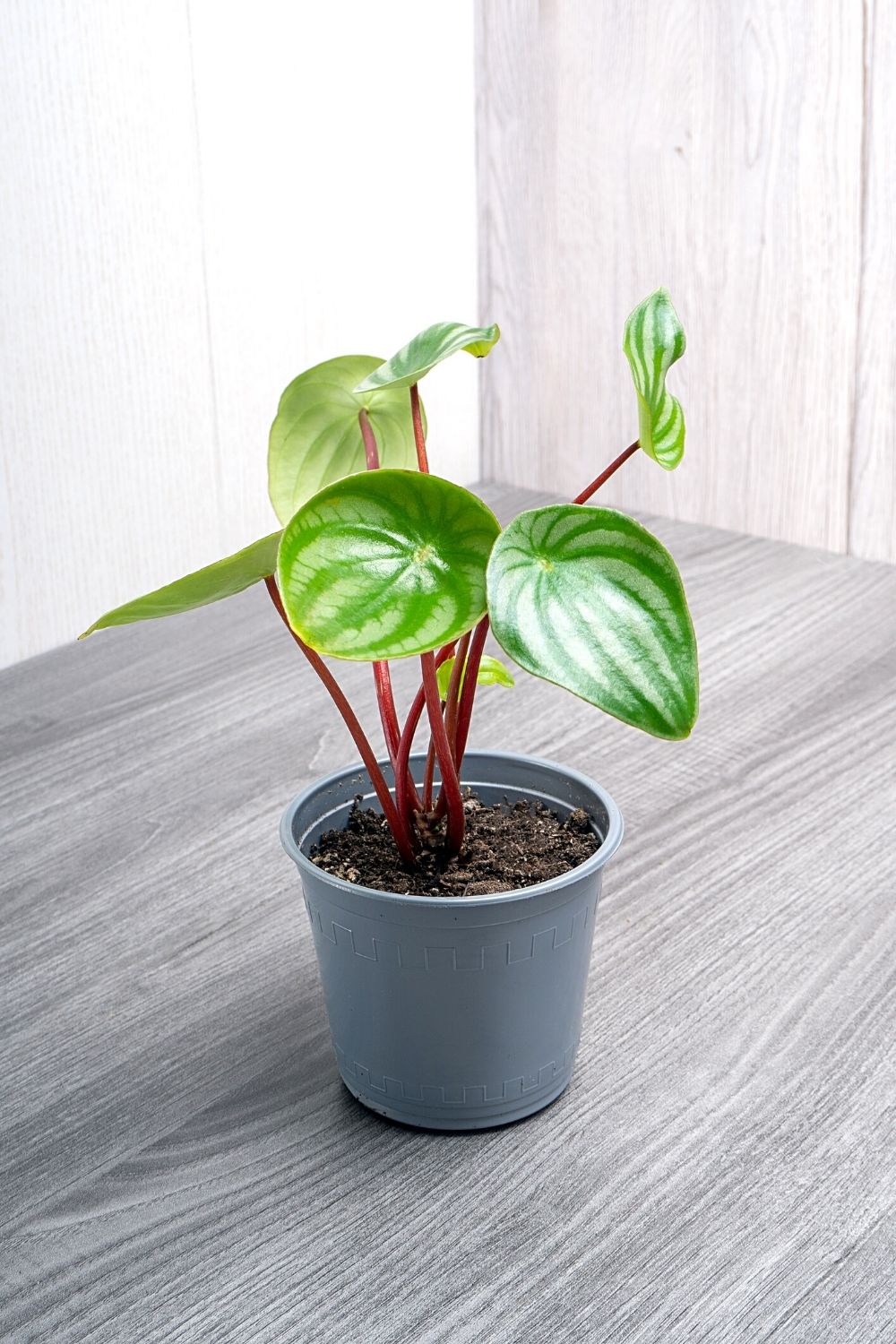
The beautiful foliage of the Watermelon peperomia is usually used to adorn huge terrariums
The watermelon peperomia is a beautiful and popular houseplant. It has lovely tear-drop-shaped emerald foliage with striking silver lines.
The red leaf stems are a nice contrast.
This little potted plant, native to South America, is ideal for well-lit workplaces and worktops. It can also be used to adorn bookshelves and huge terrariums.
Put it where you can see it up close as the silvery foliage glows in brilliant light.
- Scientific name: Peperomia argyreia
- Family: Piperaceae
- Temperature: 60 to 80 degrees Fahrenheit (16 to 26 degrees Celsius)
- Fertilizers: once a month in spring and summer
- pH: 6 to 6.6
- Soil: medium moist, loamy, and well-drained
- Lightening: little exposed to the sun
- Growth rate: fast-growing
- Humidity: 40% to 50%
Zebra Plant
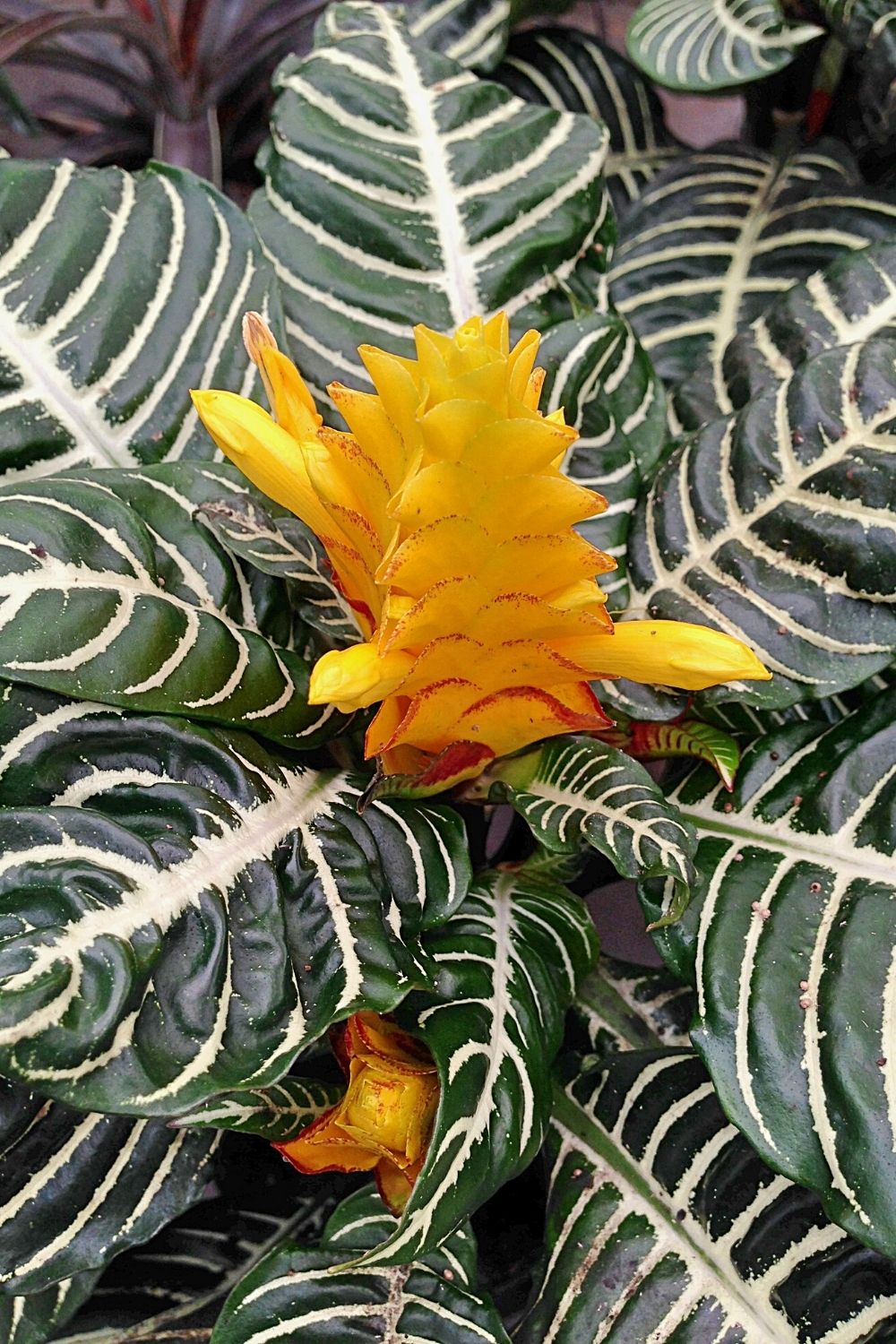
Zebra plant, despite being mildly toxic to humans, is one of the best options you can grow in a terrarium
The Zebra plant is generally considered an indoor plant; it is toxic to pets but can be mildly toxic to humans and cause skin irritation.
However, it is the best option for gardening and terrariums.
- Scientific name: Aphelandra squarrosa
- Family: Acanthaceae
- Temperature: 68 to 75 degrees Fahrenheit (20-24 degrees Celsius)
- Fertilizers: fertilize them every one to two weeks
- pH: 5.6 to 6
- Soil: enriched soil with excessive peat moss, drains well
- Lightening: bright and indirect light
- Growth rate: slow growth
- Humidity: 60% to 70%
Heartleaf Philodendron
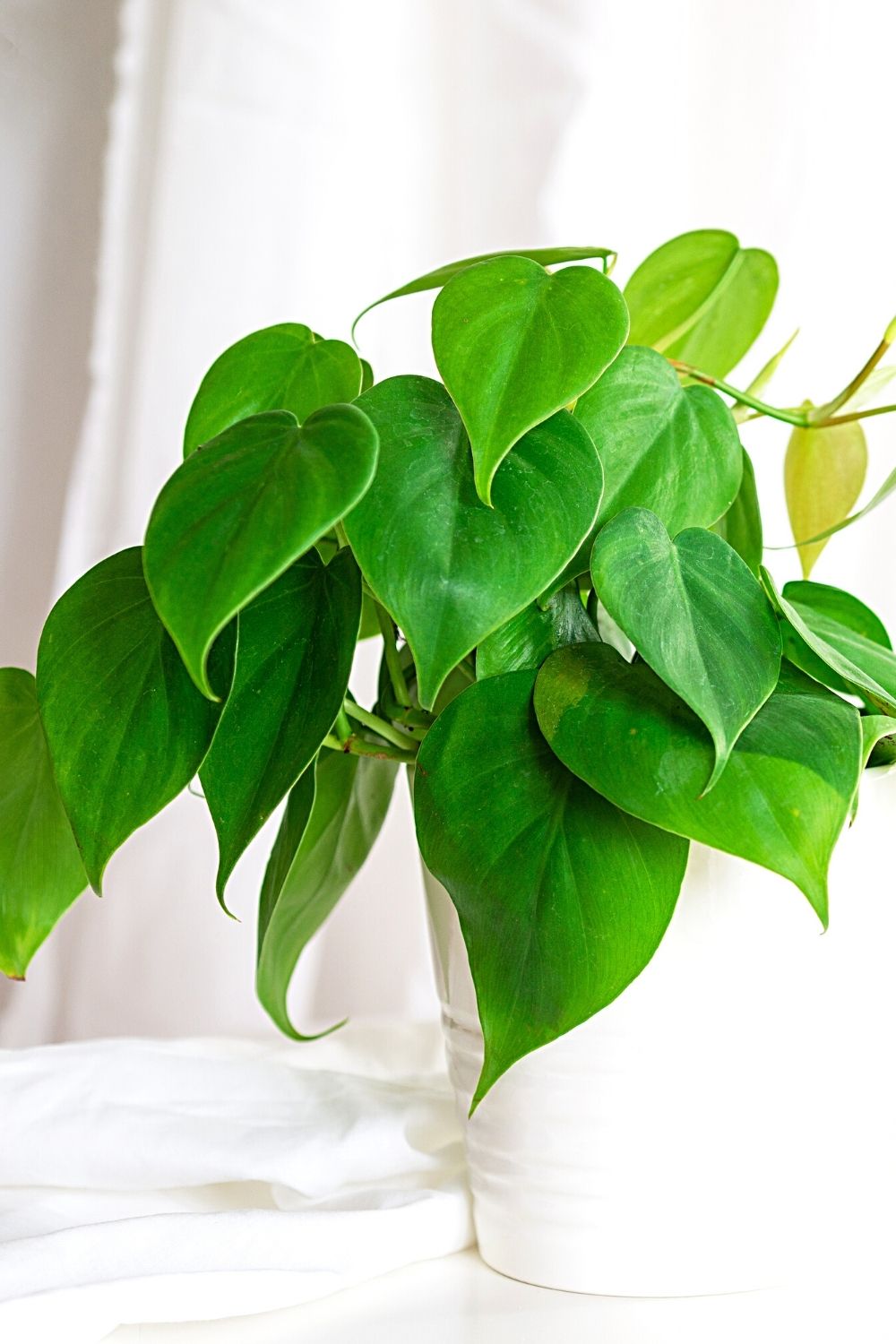
Heartleaf philodendron is another low-maintenance plant you can grow in a terrarium
Heartleaf philodendrons are tall tropical plants indigenous to South and Central America and the Caribbean.
The sweetheart or heartleaf philodendron is the best plant for individuals who neglect to care required for houseplants.
They are available in a multitude of lovely colors and can be maintained as lively, dense plants or elegant runners, and they’re simple to maintain freshness.
- Scientific name: Heartleaf philodendron
- Family: Araceae
- Temperature: 65 to 85 degrees Fahrenheit (18-29 degrees Celsius)
- Fertilizers: lightly fertilize them during the growing season after 3-4 weeks
- pH: 5.5 to 6
- Soil: fertile, lightweight and well-drained
- Lightening: indirect and diffused sunlight
- Growth rate: fast and quickly
- Humidity: 40%
Emerald Ripple Peperomia
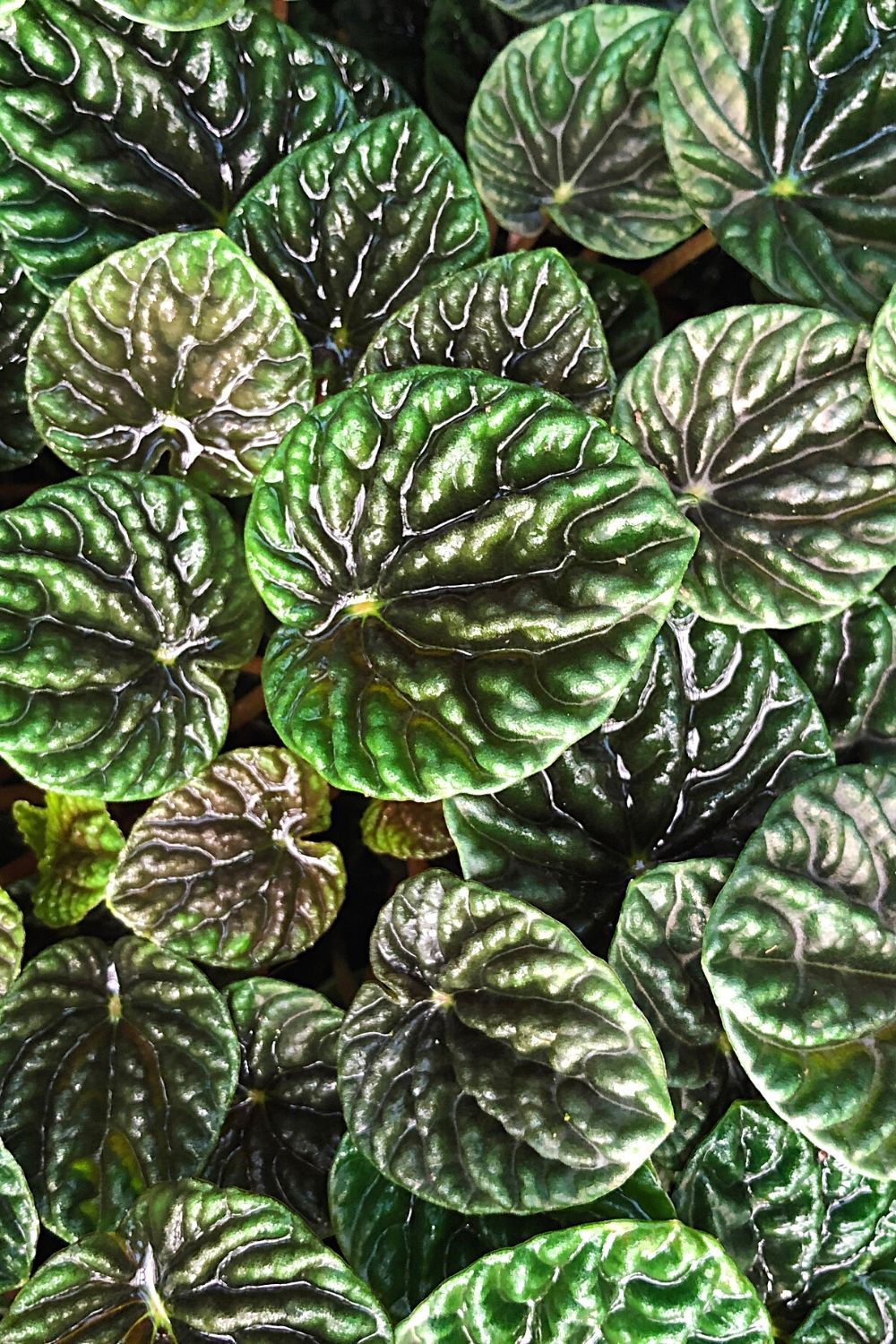
The wrinkled, dark green foliage of the Emerald ripple peperomia will beautify any terrarium you have in your home
They are rich in veins with wrinkled and dark green foliage and are ideal for indoor planting for their ability to clean air.
Excessive consumption can cause diarrhea, irritation, and nausea, but they are non-toxic in nature.
- Scientific name: Peperomia caperata
- Family: Piperaceae
- Temperature: 65 to 75 degrees Fahrenheit (18-24 degrees Celsius)
- Fertilizers: fertilize them every two weeks of spring and summer
- pH: 6.0 to 6.6
- Soil: mixed soil based on peat
- Lightening: medium and indirect sunlight
- Growth rate: fast
- Humidity: 40 to 50%
Pincushion Plant
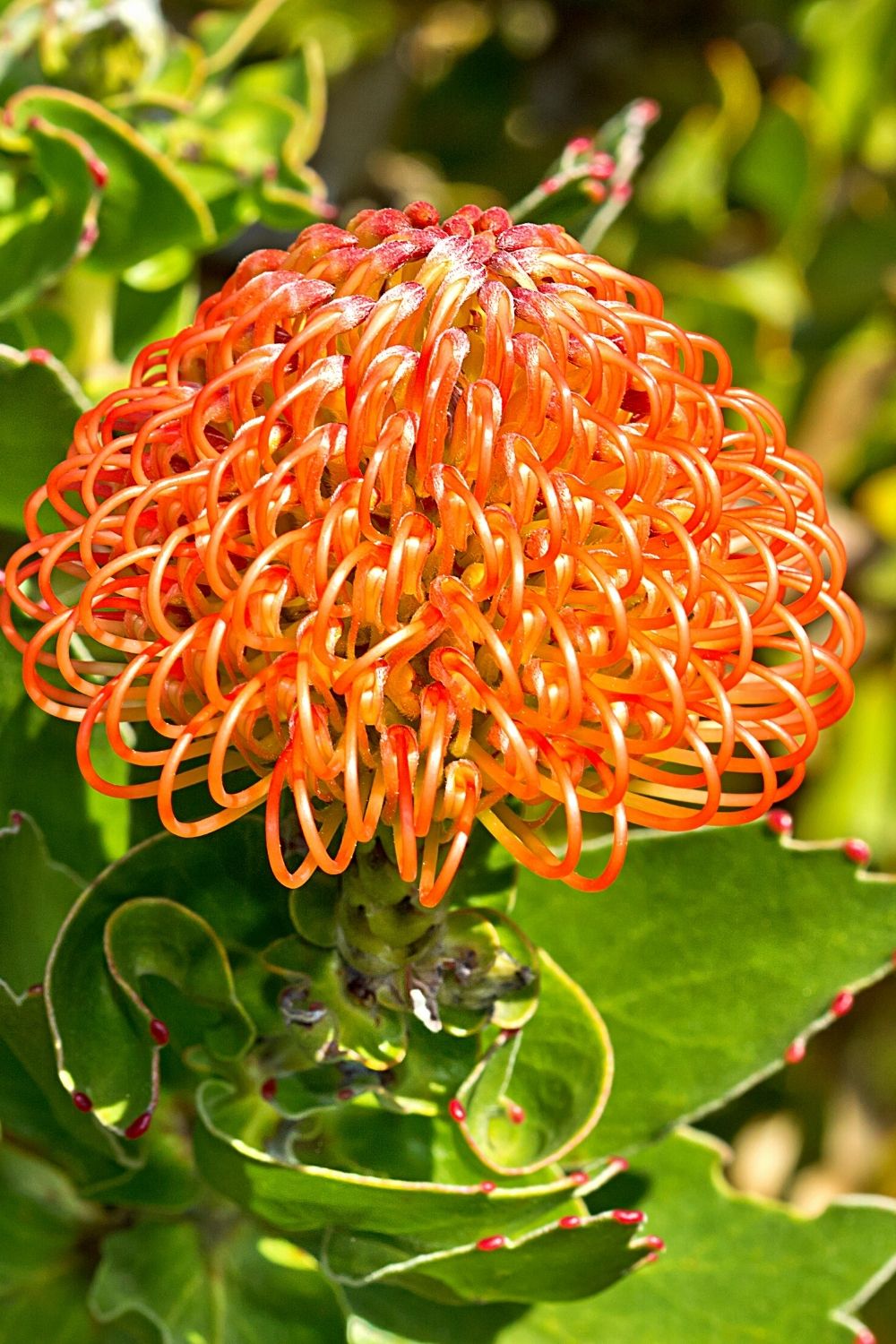
Pincushion plant is one plant that adds elegance to your terrarium
The pincushion plant is also known as the Coral bead plant. They are attracted to butterflies and increase the elegancy of gardens and terrariums.
They come in various colors of blue, yellow, orange, pink, white, and purple and are harmless to pets and humans.
- Scientific name: Navarretia
- Family: Phlox family
- Temperature: 70 to 75 degrees Fahrenheit ( 21 to 23 degrees Celsius)
- Fertilizers: peat moss and composed of enriched soil
- pH: 6 to 7.5
- Soil: Organic and well-draining
- Lightening: moderate indirect light
- Growth rate: slow
- Humidity: bear low humidity and dry air
Earthstar
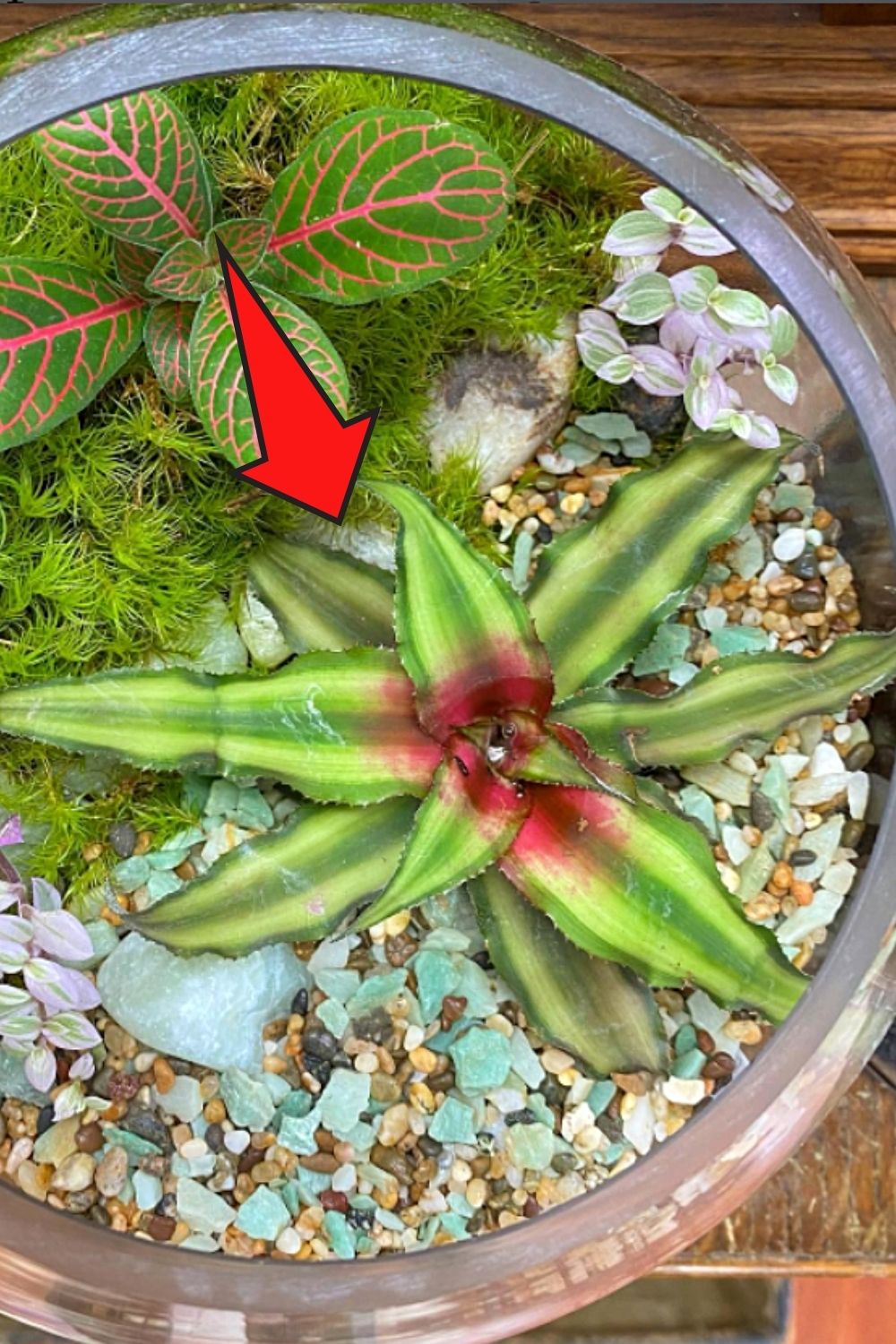
Photo Credit: @rooseveltspdx on Instagram!
Earthstars are indigenous to Brazil, with more than 1200 types. It is known as earthstar due to its shape and leaves composition.
They produce little pink and white flowers with a beautiful scent. They are non-toxic to dogs and cats, hence they are harmless plants.
- Scientific name: Geastrales
- Family: Geastrum triplex
- Temperature: 60 to 85 degrees Fahrenheit (15-29 degrees Celsius)
- Fertilizers: once a year
- pH: 4 to 6
- Soil: Mixed soil for bromeliads
- Lightening: bright and indirect light
- Growth rate: fast
- Humidity: Moderate
Pearlwort
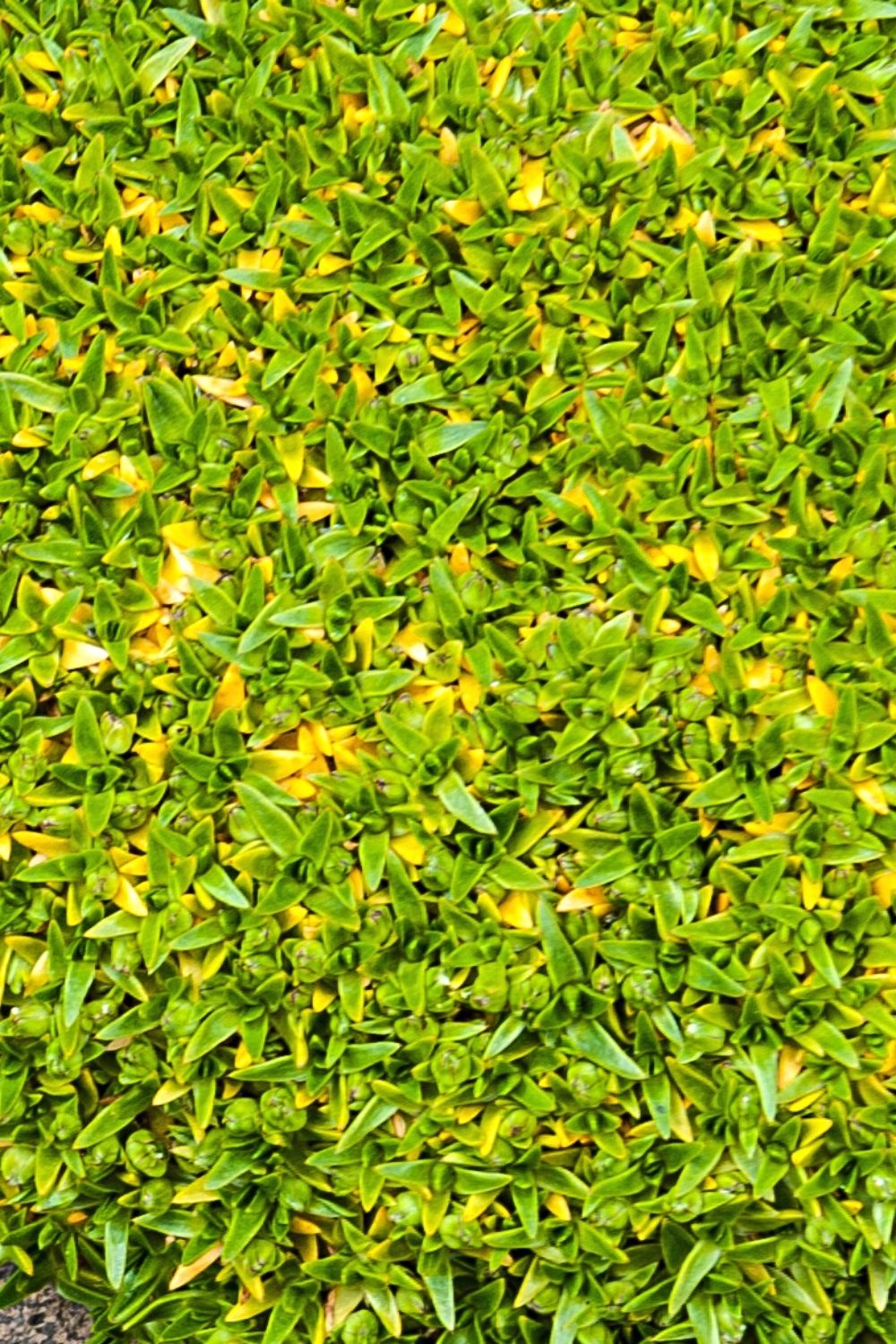
Pearlwort is a low-growing species that thrives in juvenile pots and terrariums
Pearlwort is a low-growing species that usually grows vertically in juvenile pots, generating little mounds.
It’s usual to see it spreading as a drooping mat in planters and on the ground around them.
When left to grow and develop in the grass, pearlwort becomes a nuisance weed. By seeds, this weed may readily colonize most conditions of the soil.
It is commonly confused for moss in grasslands and is a reliable sign of moist environments.
- Scientific name: Sagina procumbens
- Family: Caryophyllaceae
- Temperature: -30 to -20 degrees Fahrenheit (-34 to -29 degree Celsius)
- Fertilizers: they need excessive Nitrogen in soil for growth
- pH: 7.4
- Soil: sandy, rocky, and moist soil
- Lightening: partial shade
- Growth rate: fast
- Humidity: 70%
Artillery Plant
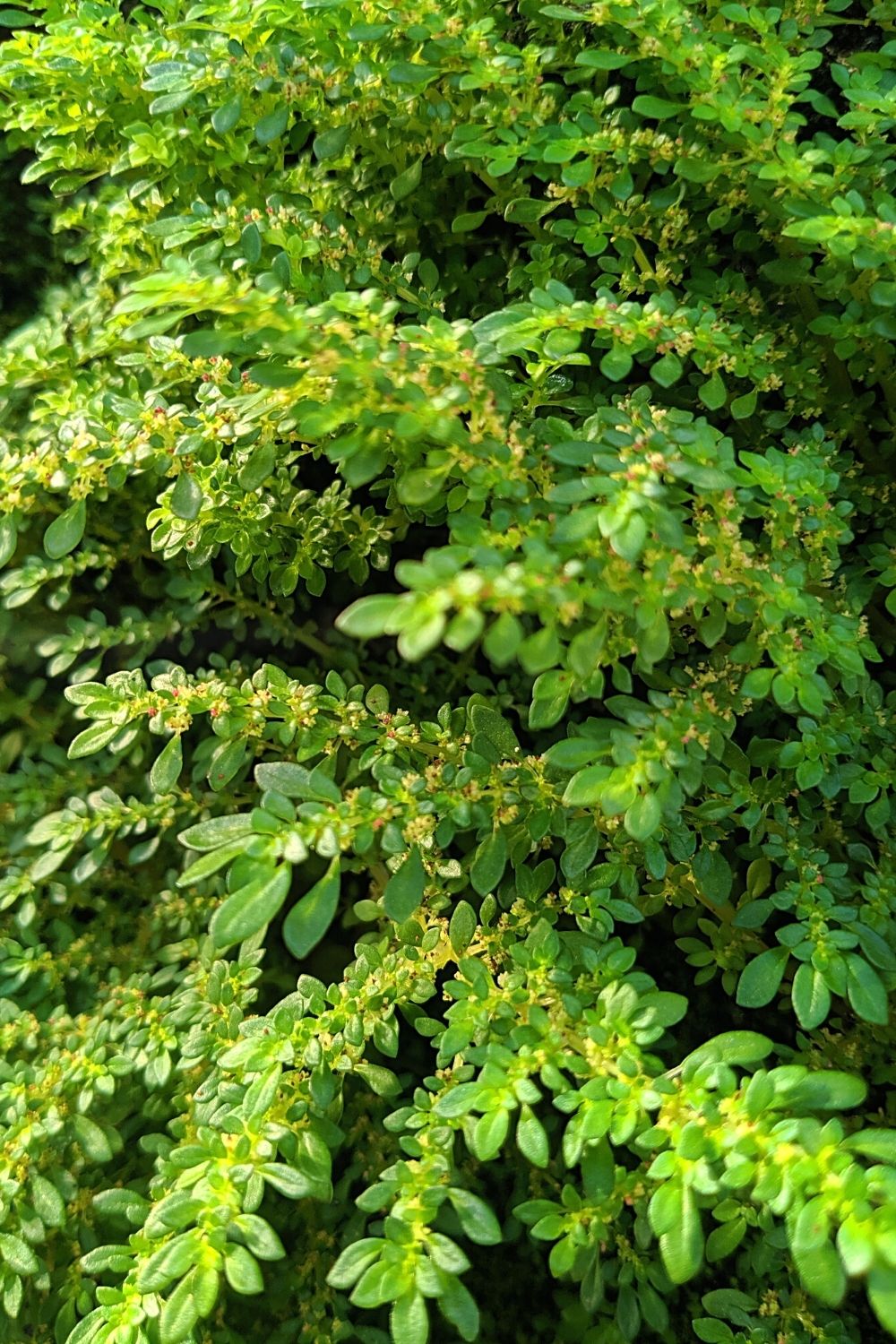
Artillery plant, one of the 600 Pilea plant species that isn’t venomous, is a great addition to a terrarium
Planting artillery plants in shaded areas in the hottest southern regions. Because the flowers are not conspicuous, artillery plants can also give superb succulent-textured, emerald leaves for pots.
This is one of roughly 600 Pilea species that aren’t venomous and belong to the Urticaceae, or nettle group.
- Scientific name: Pilea microphylla
- Family: Urticaceae
- Temperature: 60 to 75 degrees Fahrenheit (15-23 degrees Celsius)
- Fertilizers: fertilize them after every five to six weeks
- pH: 5 to 6
- Soil: warm and well-drained
- Lightening: indirect, filtered, and bright light
- Growth rate: fast
- Humidity: 50%
Bird’s Nest Fern
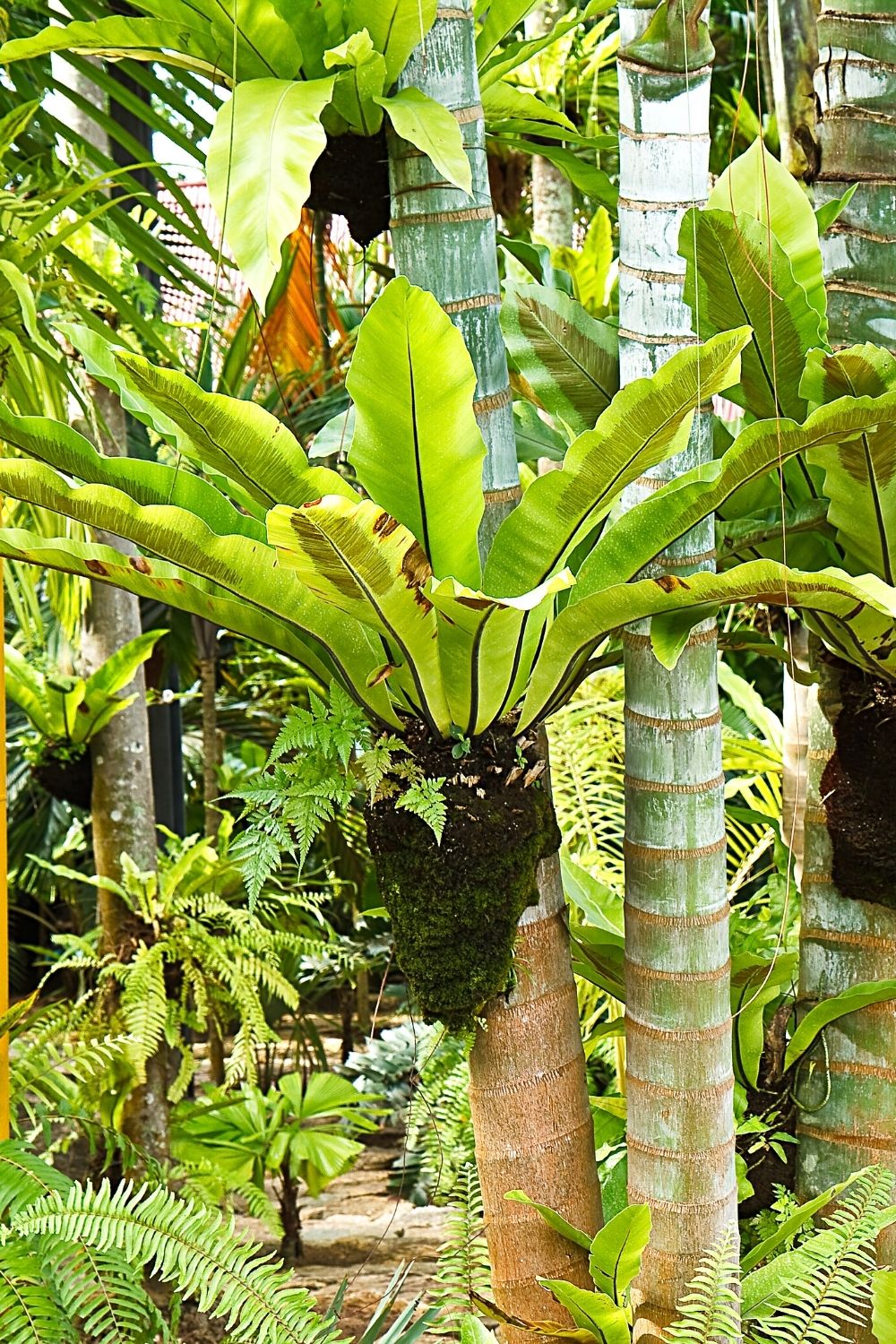
Bird’s nest fern is one of the most common ferns that are propagated as houseplants, which makes it perfect to grow in a terrarium
Asplenium nidus, or Bird’s Nest Fern, is among numerous lovely and famous ferns cultivated as houseplants.
Ferns, including this one, thrive in the specific light and milder weather that North facing window provides.
The Bird’s Nest Fern will reward you with a large number of exceptionally shiny foliage grouped in a circular arrangement that resembles a bird’s nest.
- Scientific name: Asplenium nidus
- Family: Aspleniaceae
- Temperature: 70 to 90 degrees Fahrenheit (21 to 32 degrees Celsius)
- Fertilizers: fertilize them on a monthly basis
- pH: 5 to 5.5
- Soil: peat-based with composed of organic matter
- Lightening: moderate and filtered sunlight
- Growth rate: slow-growing
- Humidity: 30% to 50%
Prayer Plant
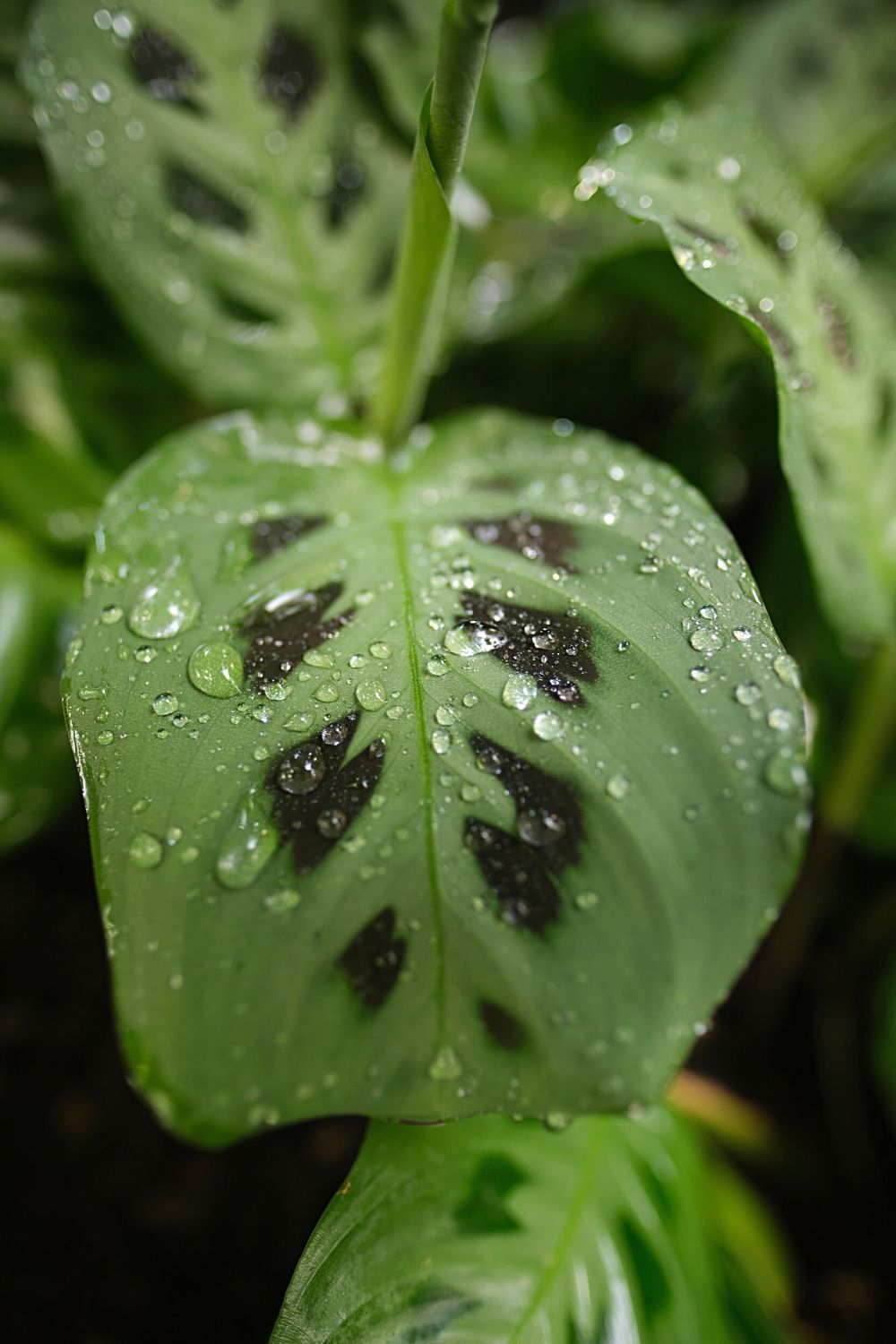
Prayer plant is another gorgeous plant that you can grow in a terrarium
Prayer Plants have a distinctive leaf pattern with feathery, artistic veins. Prayer Plants’ robust leaves make them ideal for adding color to window ledges, capes, and tables.
The foliage of Prayer Plant curls in the night, mimicking arms folded in supplication.
- Scientific name: Maranta leuconeura
- Family: Arrowroot
- Temperature: between 65 to 70 degrees Fahrenheit (18-21 degrees Celsius)
- Fertilizers: fertilize them from spring to fall after every two weeks
- pH: 5.5 to 6
- Soil: a mixture of peat moss and loamy soil
- Lightening: full shade and indirect light is required
- Growth rate: slow
- Humidity: almost 60%
Purple Passion Plant
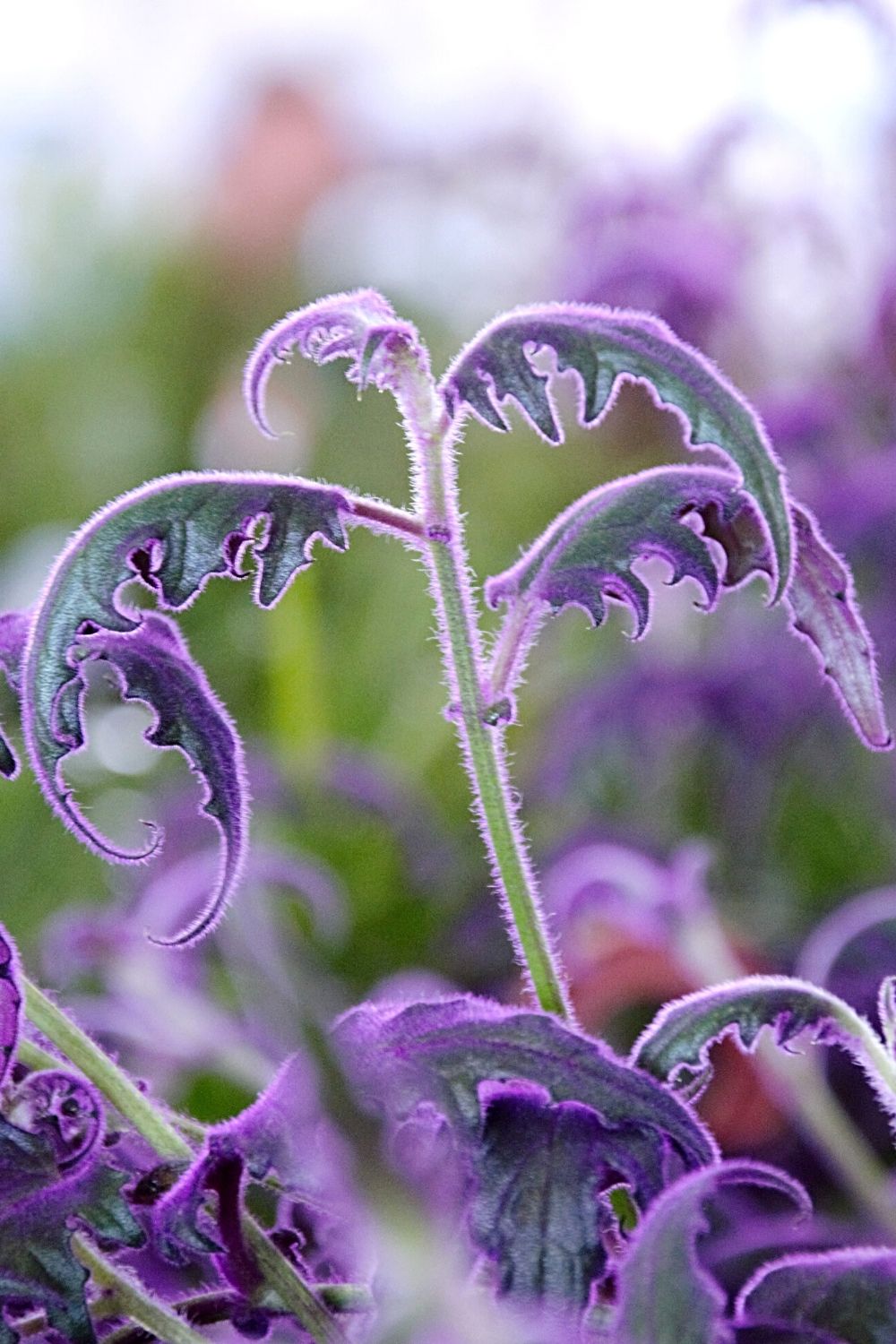
Purple passion plant are commonly used for decorating interior spaces, hence, best grown in a terrarium
Cultivating purple passion plants in a well-lit indoor environment provides an uncommon and lovely potted plant.
The silky foliage of the immature purple passion plant has dense, dark purple fur on a greenish-colored blade with a falling pattern, making it ideal for indoor dangling baskets.
Purple passion plants have been used for interior decorating for almost 200 years and can be found growing naturally in some parts of the south.
- Scientific name: Gynura aurantiaca
- Family: Daisy’s family
- Temperature: 60 to 70 degrees Fahrenheit (16 to 21 degrees Celsius)
- Fertilizers: fertilize once a month during spring and summer
- pH: 6.5 to 7.5
- Soil: a mixture of sandy and peat moss soil
- Lightening: bright and moderate sunlight
- Growth rate: fast
- Humidity: 40% to 60%

